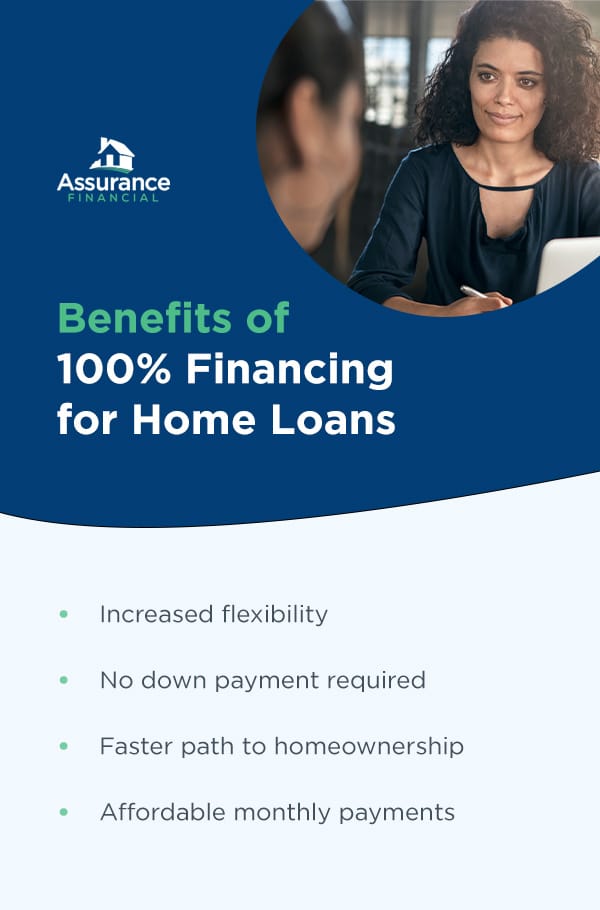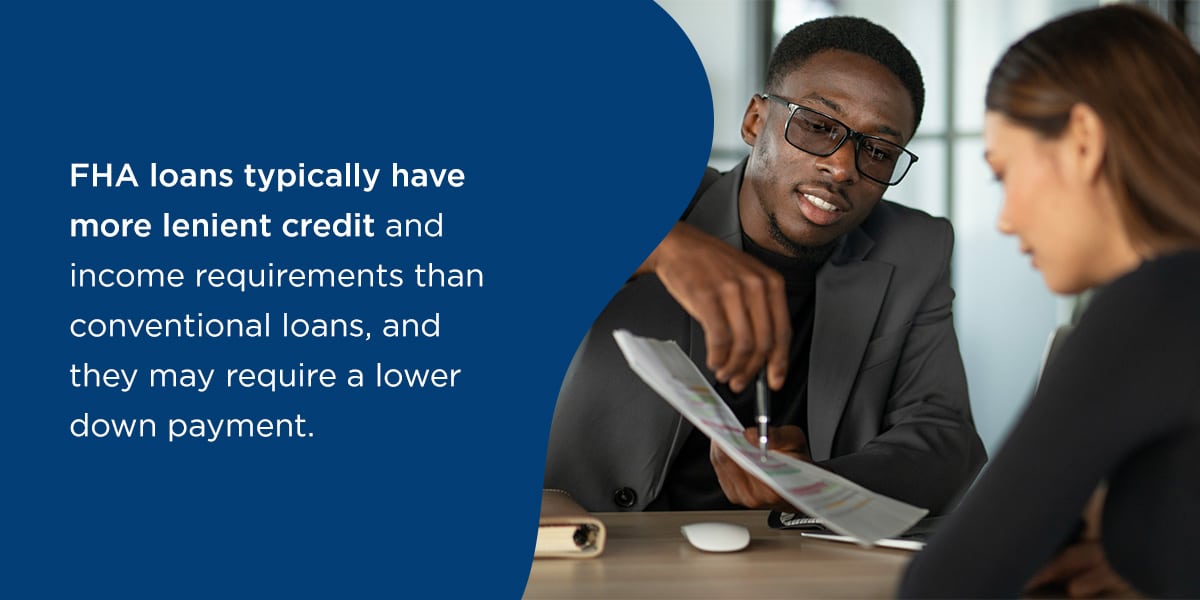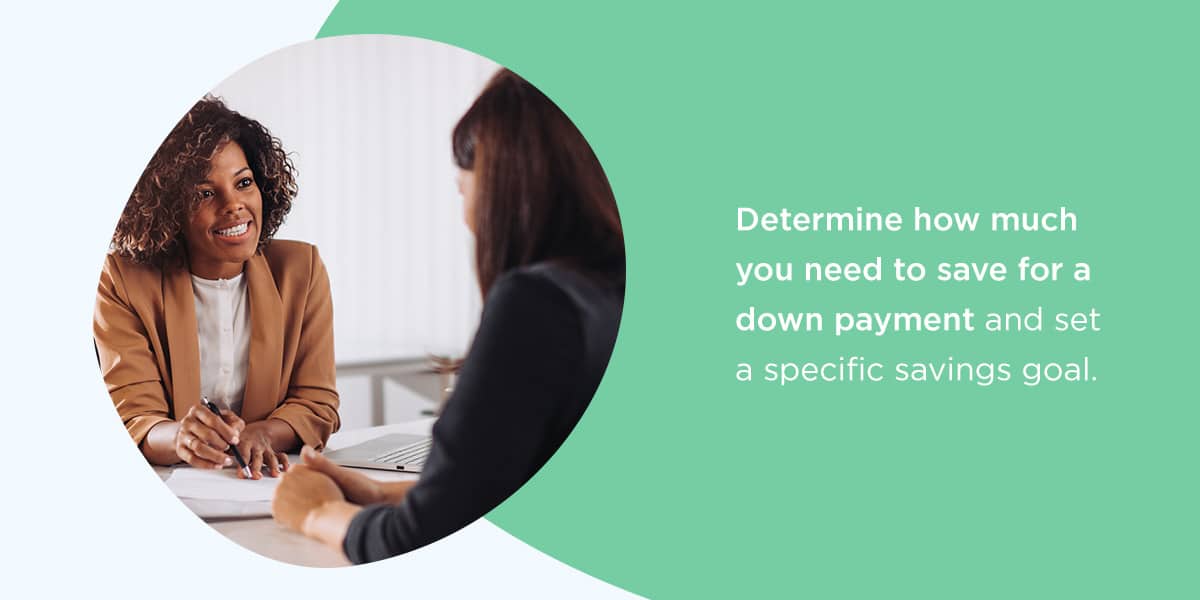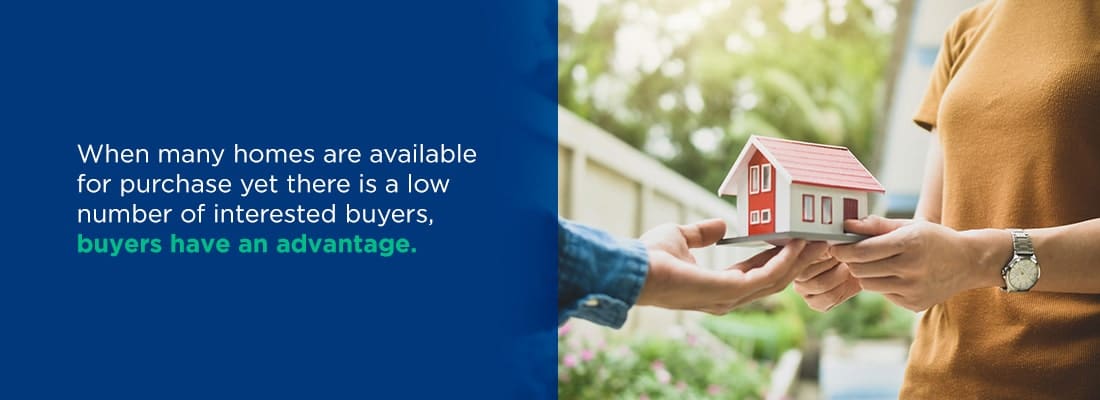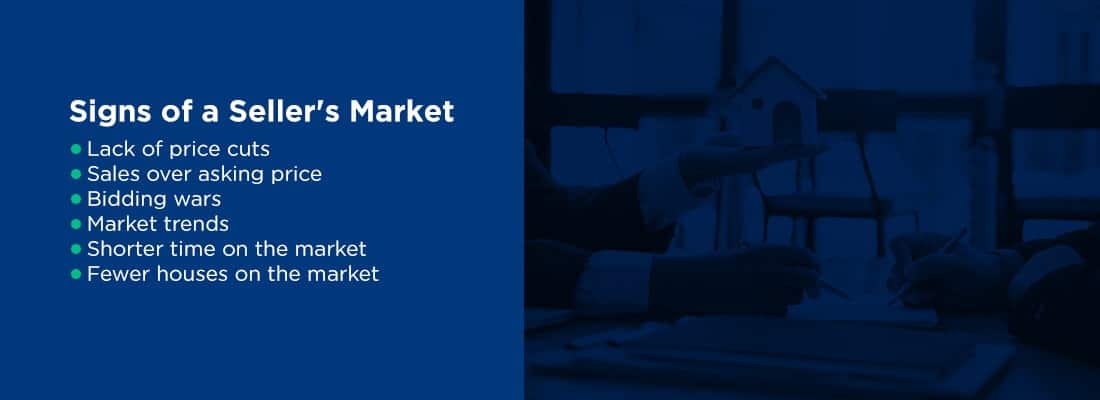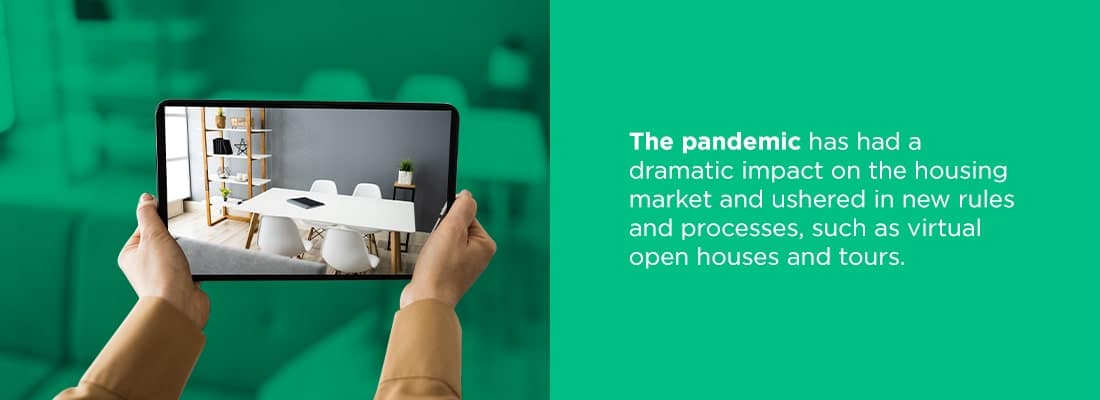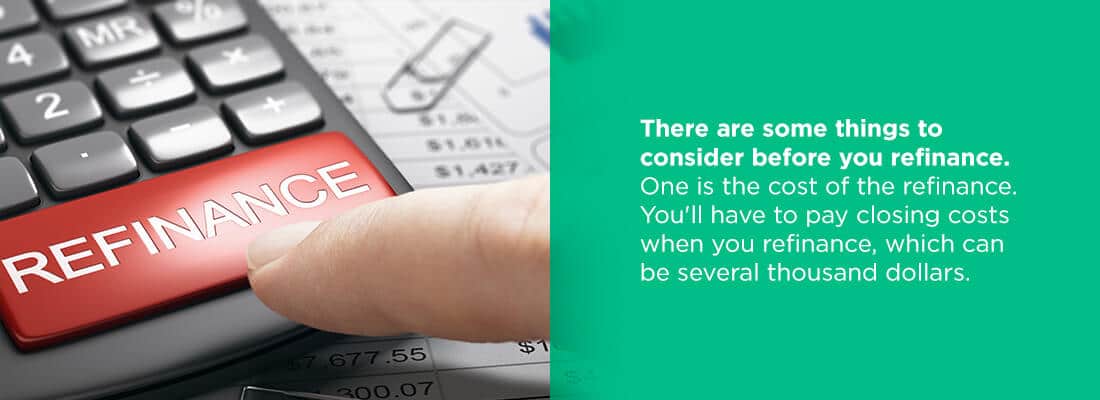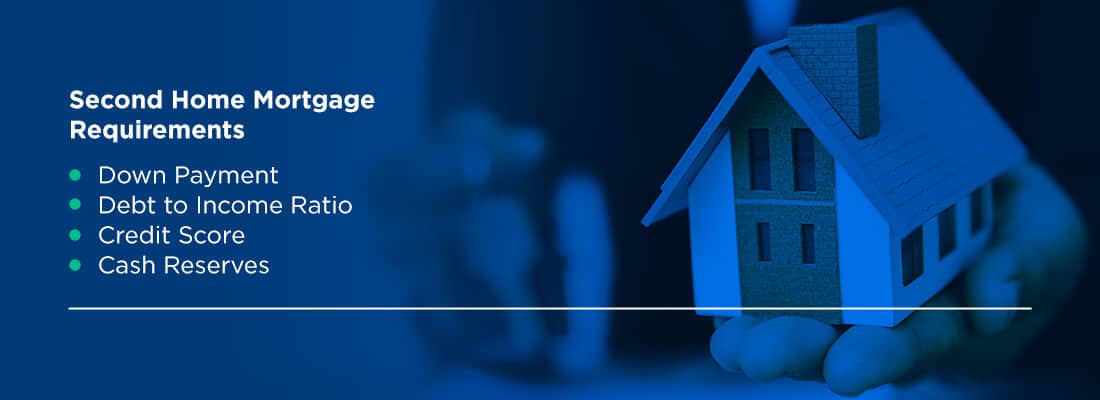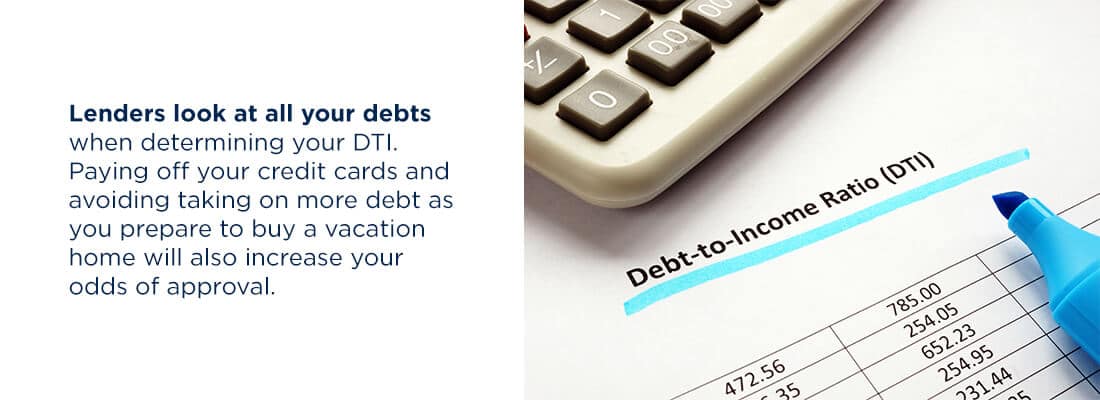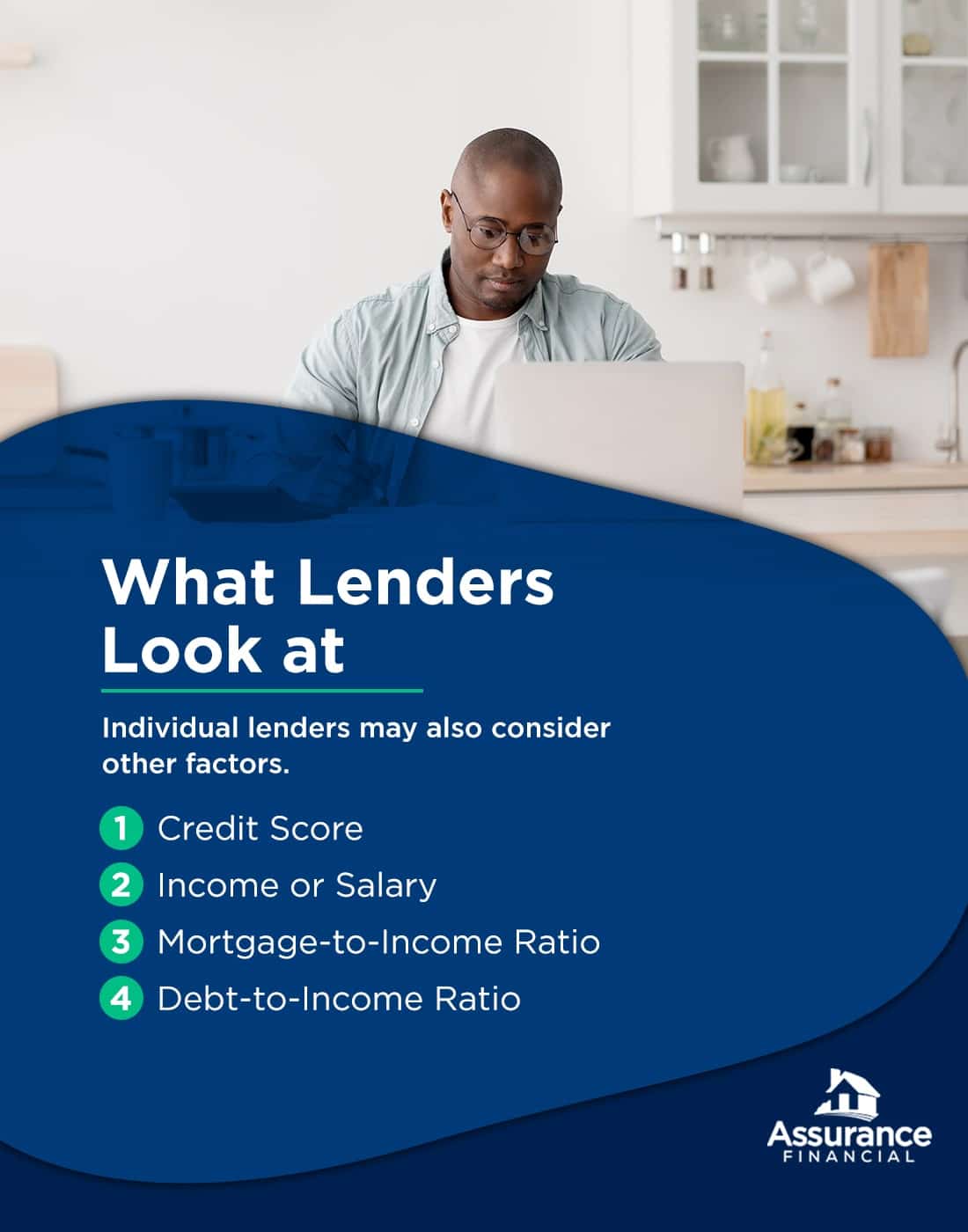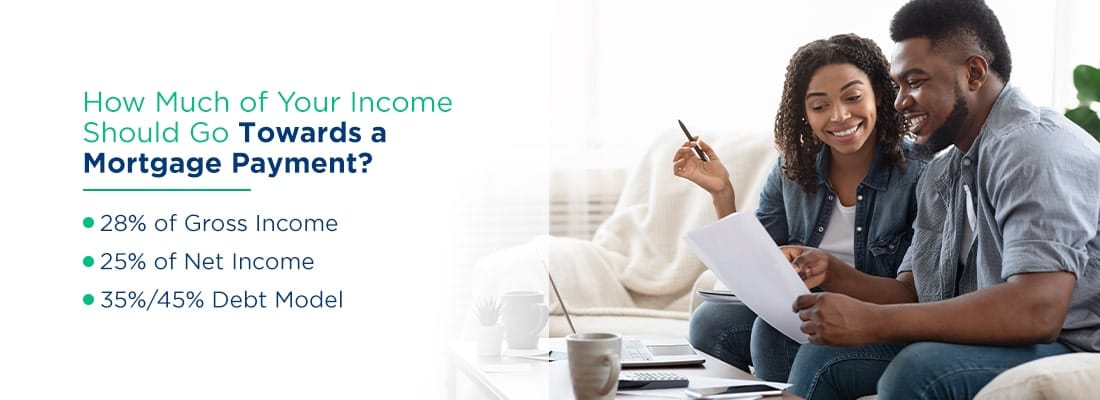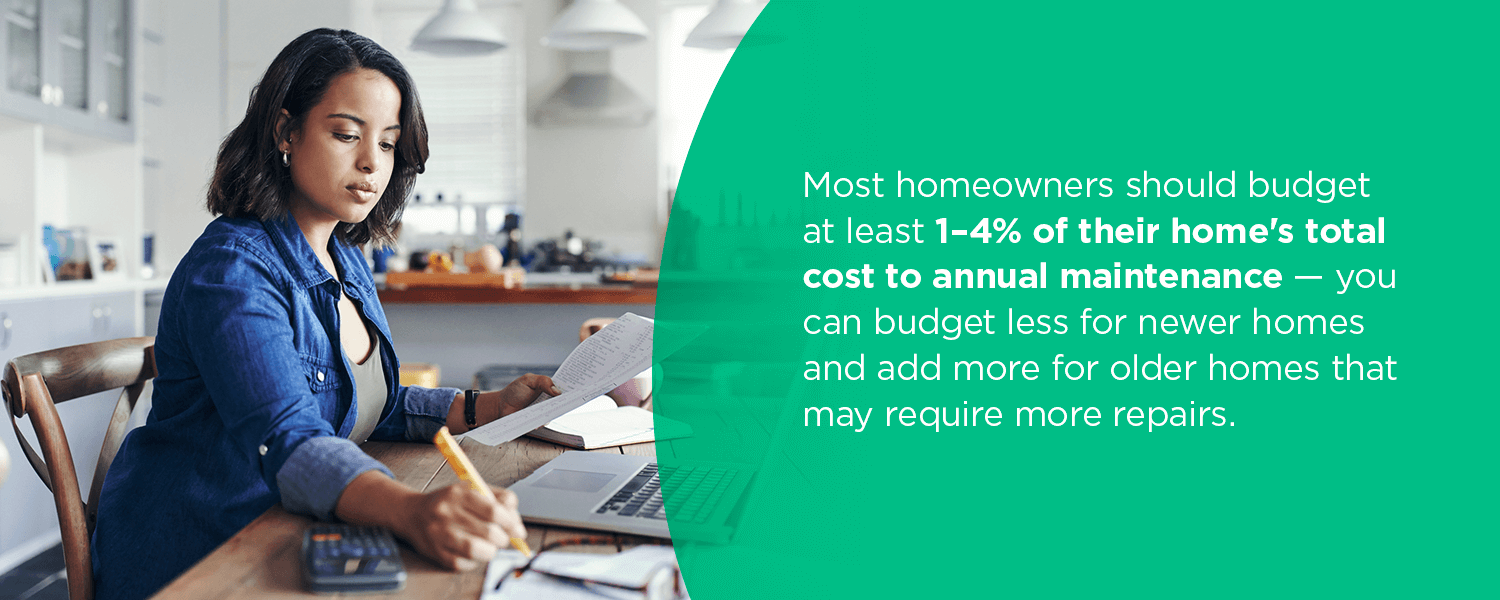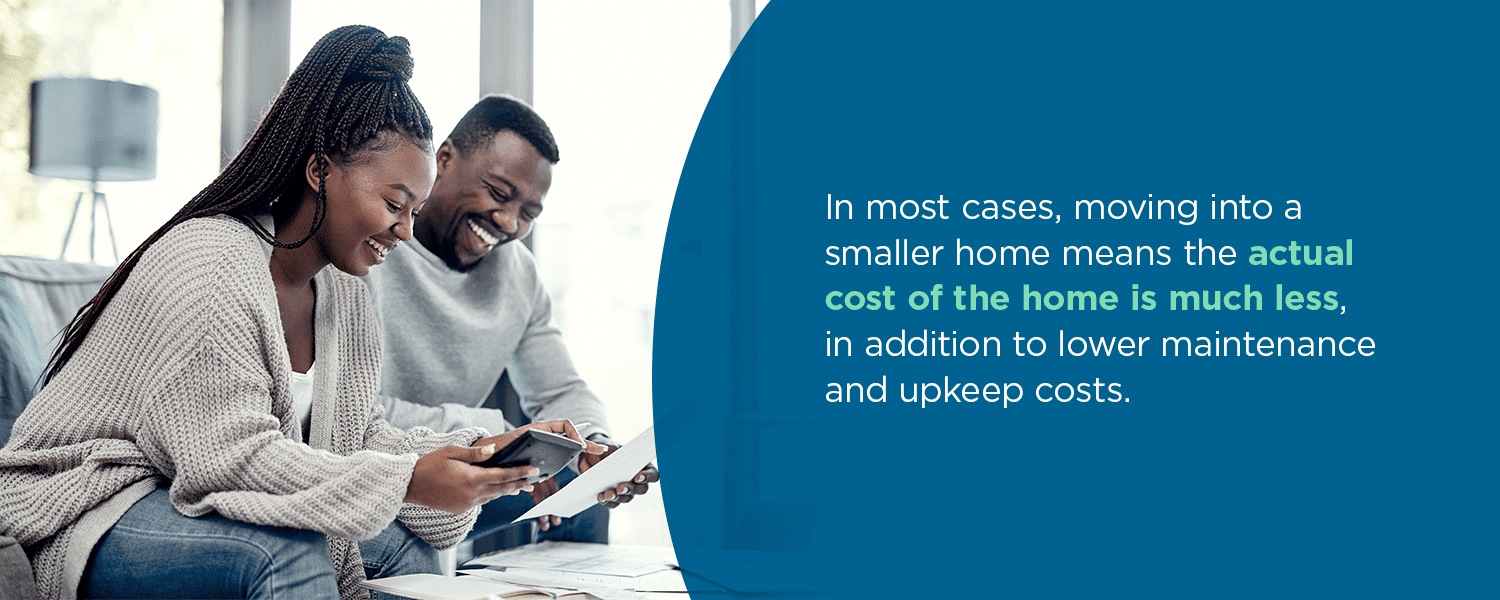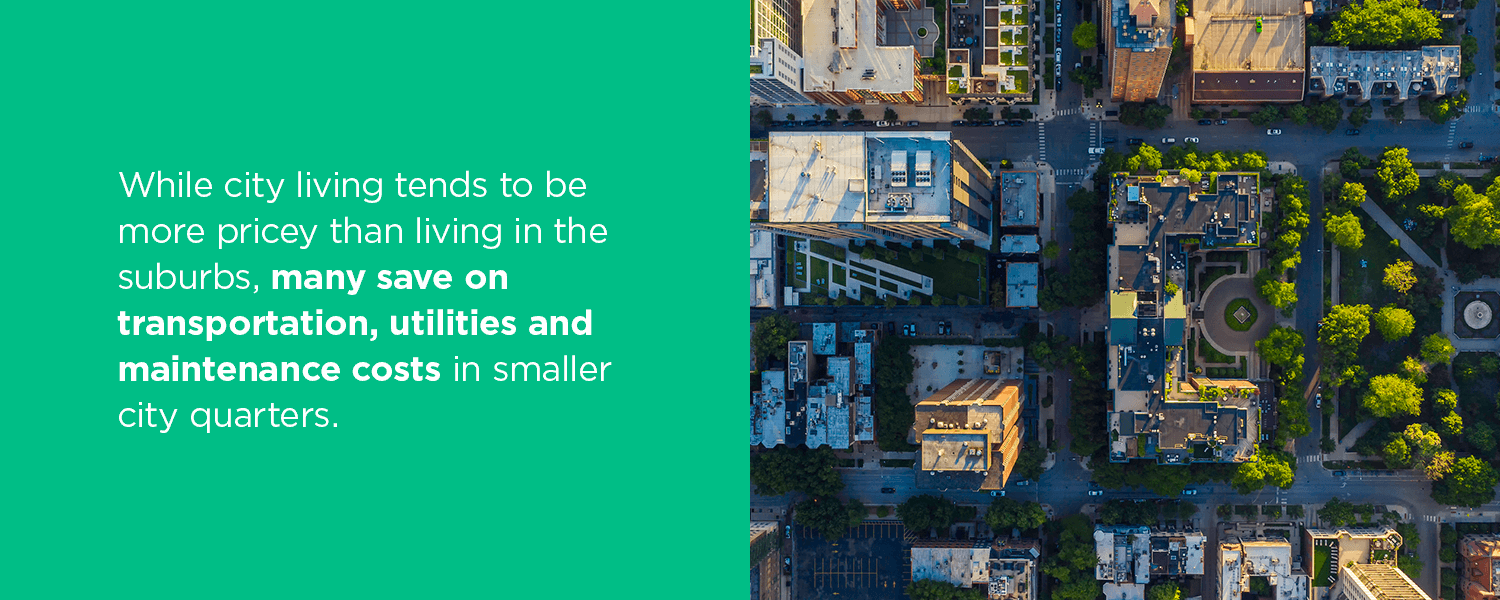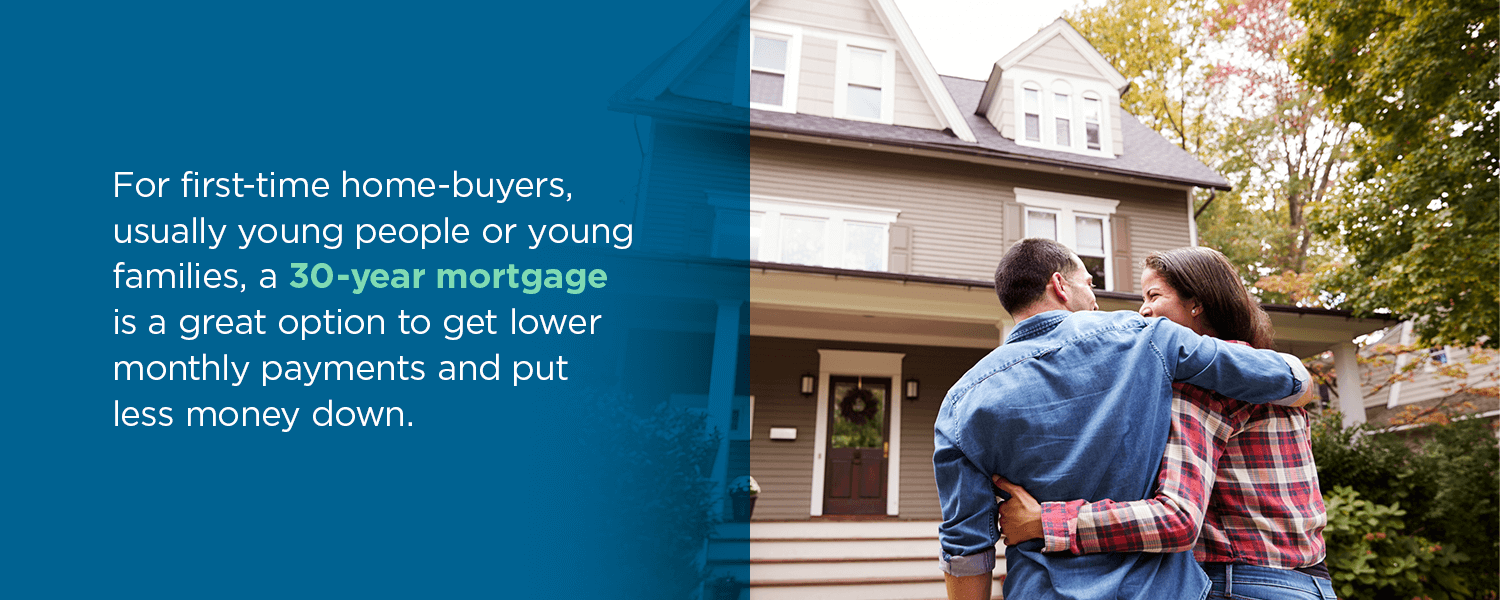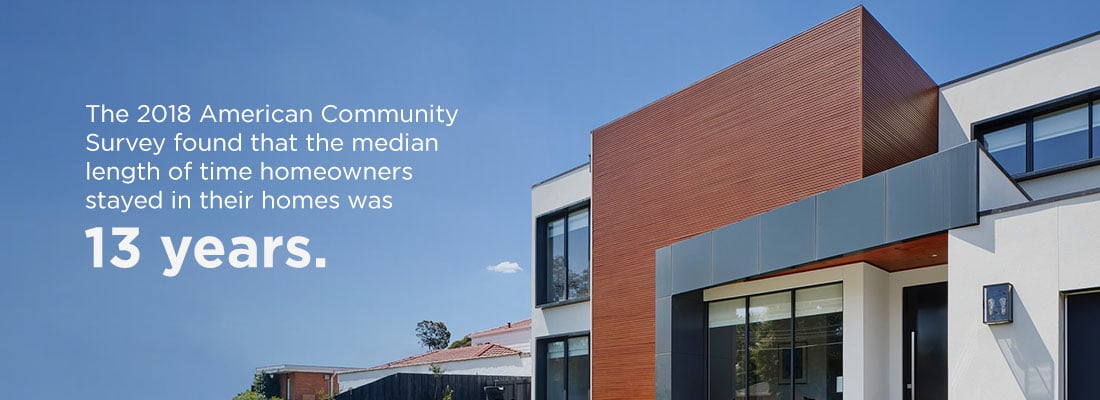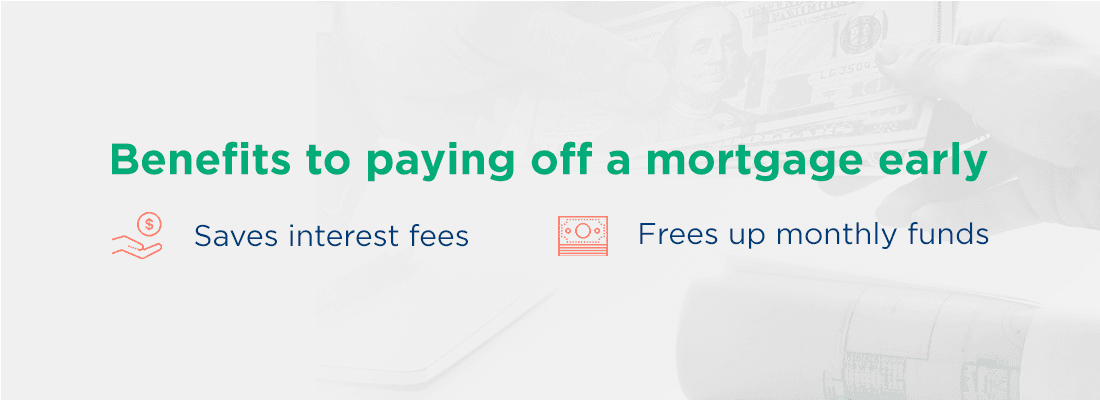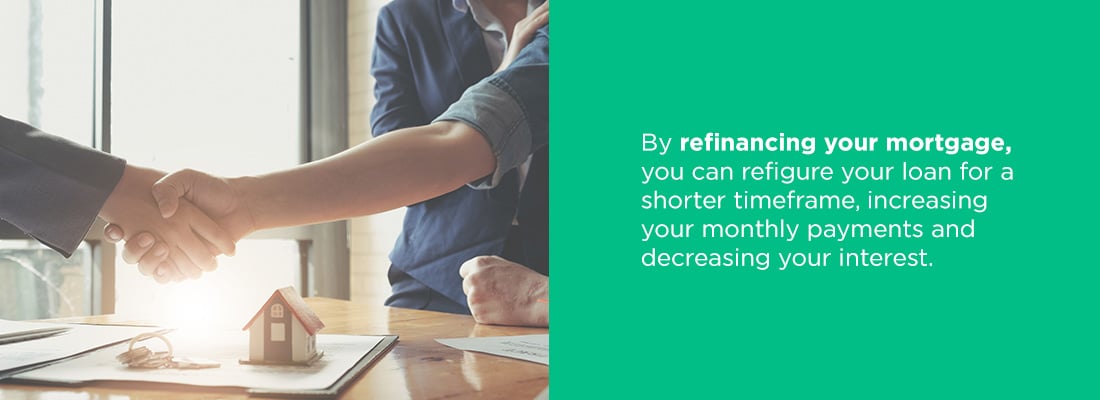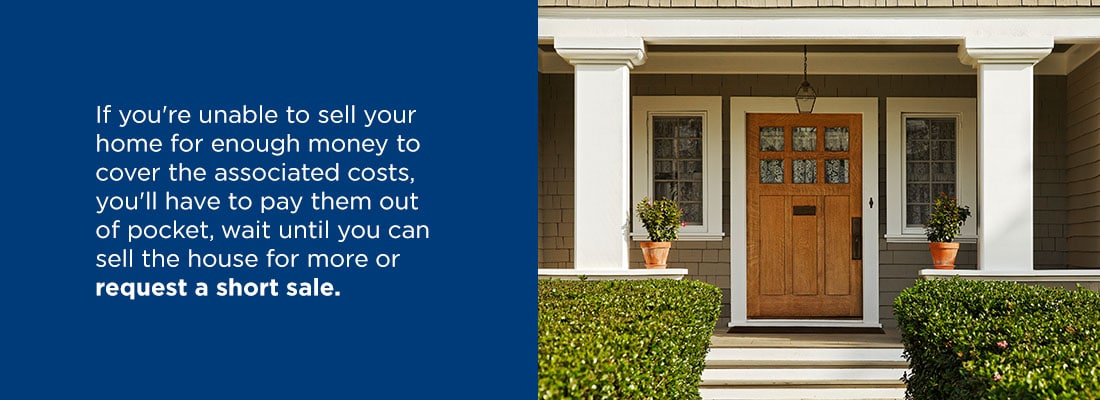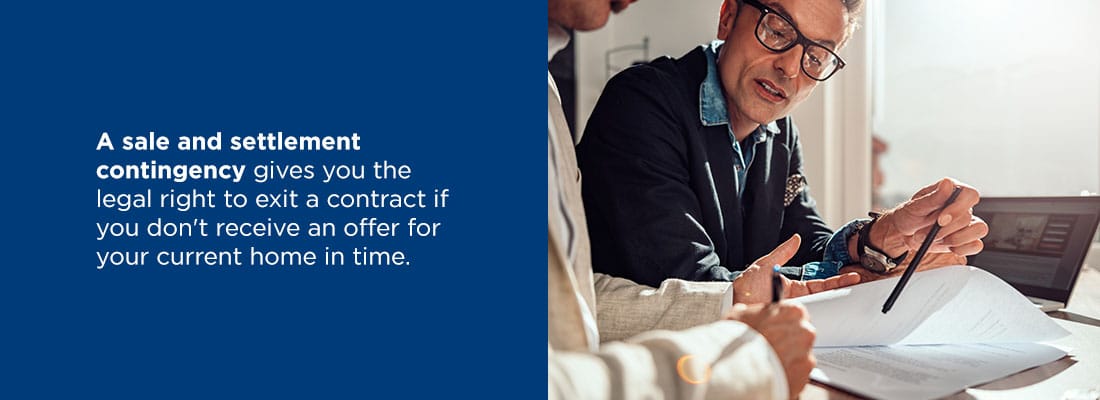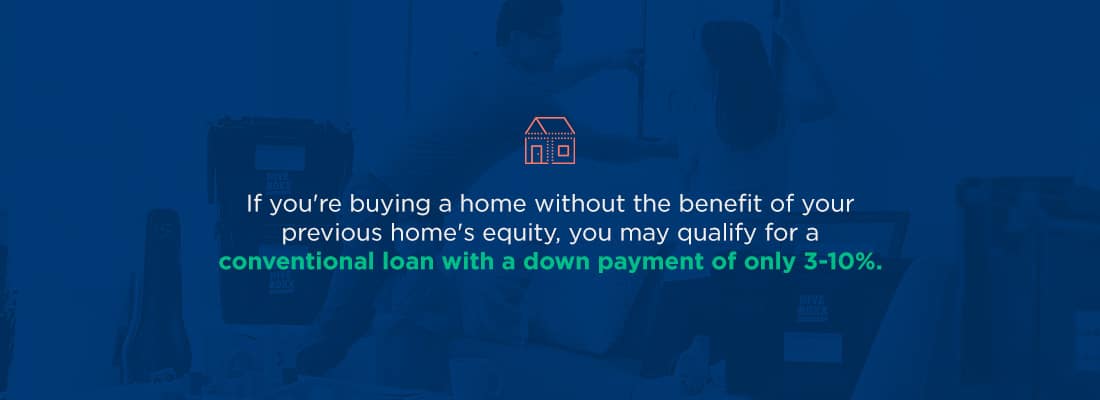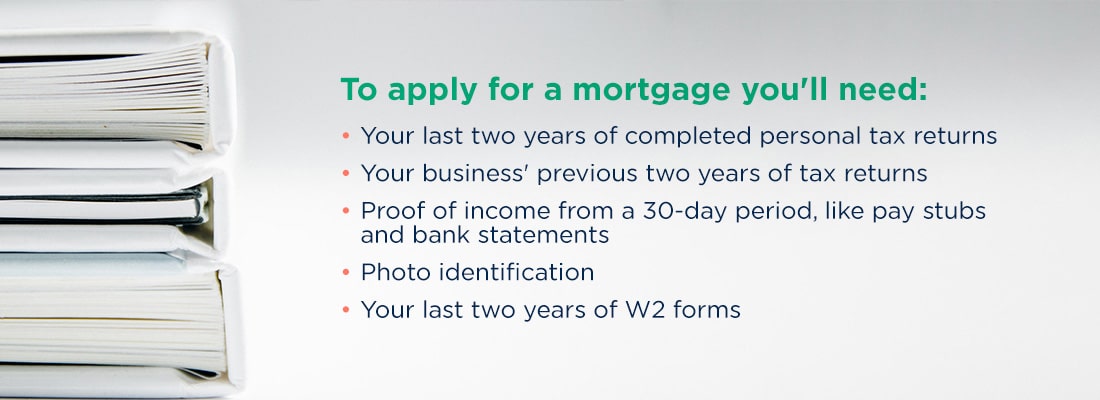Category: Purchasing a Home
Potential homebuyers, especially first-time homebuyers, often wonder how much money they should save to purchase a home. There are a number of costs associated with the process, including a down payment and closing costs. Fortunately, 100% financing options are available for home loans that may allow you to purchase a home with no money down. If you are looking for a home loan with 100% financing, meaning a home loan that doesn’t require a down payment, we cover what you need to know.
What Is a 100% Financing Home Loan?
A 100% financing home loan is a type of mortgage loan that allows you to finance the entire purchase price of a home without making a down payment. With this type of loan, you don’t need to put any money down, which can make it easier for you to purchase a home if you do not have a large amount of savings or want to keep your savings for other purposes.
There are a few different types of 100% financing home loans available, including United States Department of Agriculture (USDA) loans and Veterans Affairs (VA) loans. These loans are backed by the government and are designed to help make homeownership more affordable and accessible to a wider range of people.
While a 100% financing home loan may appeal to some borrowers, this option may also come with higher interest rates and fees. Carefully consider your options and work with a reputable lender to ensure you are getting the fairest loan terms possible.
What Options Are Available for No Money Down Home Loans?
There are two government-backed home loan options that do not require a down payment — a USDA loan and a VA loan.
USDA Home Loan
This type of mortgage loan is guaranteed by the United States Department of Agriculture (USDA). A USDA home loan is designed to help low- to moderate-income borrowers in rural areas purchase a home or make home repairs. USDA loans typically offer favorable terms, including low-interest rates and zero down payment requirements. They are also available to borrowers with lower credit scores than other types of loans.
To qualify for a USDA loan, the property you plan to purchase or renovate may need to be located in a designated rural or suburban area as defined by the USDA. Additionally, you may need to meet certain income limits based on the area you are buying in and your household size. USDA loans are administered by approved lenders, and since the USDA guarantees these loans, lenders are protected from losses if you default on your loan.
VA Home Loan
This type of mortgage loan is guaranteed by the U.S. Department of Veterans Affairs (VA). A VA loan is designed to help current and former members of the U.S. military and their qualifying surviving spouses buy or refinance a home. VA loans typically offer favorable terms, such as no down payment requirement and no private mortgage insurance requirements, making them an attractive option for eligible borrowers.
To qualify for a VA loan, you may need to obtain a Certificate of Eligibility (COE) from the VA. The COE verifies that you meet the VA’s service requirements and are eligible for the loan. Like USDA loans, VA loans are administered by approved lenders, and the guarantee from the VA protects lenders from losses if you default on the loan.
Benefits of 100% Financing for Home Loans
Receiving 100% financing for home loans, also known as zero-down payment loans, can offer you several benefits. The following are some of the potential benefits:
- Increased flexibility: If you have saved up a down payment, you can use these funds for other expenses, such as home renovations, moving costs or emergency expenses.
- No down payment required: With 100% financing, you are not required to come up with a large down payment to purchase a home, which can be a significant financial burden.
- Faster path to homeownership: With 100% financing, you can achieve your dream of homeownership sooner.
- Affordable monthly payments: With no down payment, the loan amount is higher, but the monthly payments may still be manageable, especially with competitive interest rates.
100% financing may not be available for all types of home loans, and we recommend that you carefully consider the terms and conditions of any loan before making a decision. Additionally, you may be required to have strong credit scores and income to qualify for this type of loan.
How to Buy a House With No Money Down
Buying a house with no money down is possible, but it may require careful planning and a good understanding of your options. The following are some potential ways you can buy a house with no money down:
- Gift funds: If you have friends or family who are willing to help you purchase a home, they can give you a monetary gift that you can use as a down payment.
- Negotiate with the seller: In some cases, you may be able to negotiate with the seller to cover some or all of the down payment as part of the sale agreement.
- Apply for a VA loan or USDA loan: If you are a current or former member of the U.S. military or a qualifying surviving spouse, you may be eligible for a VA loan, which requires no down payment. If you are looking to buy a home in a rural area, you may be eligible for a USDA loan, which also requires no down payment.
- Down payment assistance programs: Some state and local governments offer down payment assistance programs to help you buy a home with little or no down payment if you are a low- to moderate-income earner.
Keep in mind that even if you are able to buy a house with no money down, you may still be responsible for other costs associated with the home purchase, such as closing costs and appraisal fees. Carefully consider all of your options and speak with a qualified mortgage professional to help you navigate the homebuying process.
What if I Don’t Qualify for 100% Financing for a Home Loan?
If you don’t qualify for 100% financing for a home loan, you may have some other options, such as applying for a conventional loan, applying for an FHA loan, applying for down payment assistance, applying for closing cost assistance or saving for a down payment.
Apply for a Conventional Loan
This type of mortgage loan is not guaranteed or insured by a government agency like the U.S. Department of Veterans Affairs (VA) or the Federal Housing Administration (FHA). Conventional loans are backed instead by private lenders and investors. Typically, conventional loans come with stricter credit and income requirements than government-backed loans. They are often a good option for borrowers who have good credit scores and sufficient income to qualify for a loan.
Conventional loans can be conforming or nonconforming. Conforming loans are those that meet the guidelines set by Fannie Mae and Freddie Mac, the two government-sponsored enterprises that buy and sell mortgage loans. Nonconforming loans, also known as jumbo loans, exceed the conforming loan limits set by Fannie Mae and Freddie Mac.
Conventional loans typically require a down payment of at least 3% of the purchase price, although some lenders may want a larger down payment depending on your credit score and other factors. You may also be required to pay private mortgage insurance (PMI) if you make a down payment of less than 20%. Conventional loans are a popular option for homebuyers who meet the credit and income requirements and want to avoid the mortgage insurance requirements of government-backed loans.
Apply for an FHA Loan
This type of mortgage loan is backed by the Federal Housing Administration (FHA), a government agency that belongs to the Department of Housing and Urban Development (HUD). An FHA loan is designed to help lower-income and first-time homebuyers who may have difficulty qualifying for a conventional mortgage loan. The FHA insures the loan, which means that if you default on the loan, the lender is protected against losses.
FHA loans typically have more lenient credit and income requirements than conventional loans, and they may require a lower down payment. The down payment for an FHA loan can be as low as 3.5% of the purchase price, although you may be required to make a down payment of at least 10% if your credit score is lower than 580.
One of the key benefits of an FHA loan is that it allows you to qualify for a loan with a lower credit score than would typically be required for a conventional loan. Additionally, FHA loans may offer lower interest rates and more flexible repayment terms than conventional loans. However, FHA loans may also require you to pay an upfront mortgage insurance premium (MIP), as well as an annual MIP that is added to the monthly mortgage payment. The MIP is used to fund the FHA loan program and protect lenders against losses.
Apply for Down Payment Assistance
Down payment assistance (DPA) is a type of financial assistance that is designed to help homebuyers cover the upfront costs associated with purchasing a home, specifically the down payment and closing costs. Down payment assistance programs are often administered by state and local housing agencies and nonprofit organizations.
Down payment assistance can take many forms, such as grants, loans or forgivable loans. The funds can be used to cover all or a portion of the down payment and closing costs, depending on the program’s guidelines and your qualifications. DPA programs are typically targeted at low-income homebuyers and first-time homebuyers who may struggle to save for a down payment. They can also be available to certain groups, such as first-time homebuyers, veterans or teachers.
The goal of down payment assistance is to make homeownership more accessible and affordable to a wider range of people. By reducing the upfront costs of buying a home, DPA programs can help you get into a home faster and with less financial strain. Down payment assistance programs may have specific requirements and qualifications that you may need to meet to be eligible. Carefully review the guidelines of any DPA program you are considering to ensure that you meet the qualifications and understand the terms of the assistance.
Apply for Closing Cost Assistance
Closing cost assistance is a type of financial assistance that can help you cover the closing costs associated with purchasing a home. Closing costs are expenses that are incurred during the homebuying process, such as lender fees, appraisal fees and title fees. Closing cost assistance programs are often administered by state and local housing agencies and nonprofit organizations. The assistance can be used to cover some or all of the closing costs.
Closing cost assistance is typically targeted at low- to moderate-income homebuyers who may struggle to cover the upfront costs of buying a home to make homeownership more accessible and affordable. Check if there are any closing cost assistance programs available in your area.
Save for a Down Payment
Trying to save for a down payment on a home can be a significant challenge, especially if you’re starting from scratch. However, there are several strategies that can help you save money more effectively and reach your down payment goal faster, such as:
- Reduce debt: Pay off high-interest debt, such as credit cards, as quickly as possible. This will free up more money for savings.
- Create a budget: Make a budget that takes into account your income and expenses and look for areas where you can cut back on spending. Consider reducing discretionary expenses like eating out, entertainment and subscriptions.
- Set a savings goal: Determine how much you need to save for a down payment and set a specific savings goal. This will help you track your progress and stay motivated.
- Consider a side hustle: Look for ways to earn extra income, such as freelancing, tutoring or selling items you no longer need. Put this extra income directly into your down payment savings account.
- Automate your savings: Set up automatic transfers from your checking account to a savings account each month. This will help you save money consistently and avoid the temptation to spend it elsewhere.
Saving for a down payment can take time and discipline, but if you don’t qualify for 100% financing, this can be an important step toward achieving homeownership.
Where to Start
Every homebuyer has different needs, which is why we offer so many different home loan options at Assurance Financial. We can help regardless of your life stage or homebuying goal, whether you are:
- First-time homebuyers.
- Vacation homebuyers.
- Experienced homebuyers.
- Self-employed homebuyers.
We can also assist if you’re downsizing your home, remodeling or building a home, or investing in real estate. Use a 100% financing mortgage calculator to determine how this mortgage may impact your finances.
Apply for a Loan Today With Assurance Financial
At Assurance Financial, we have been servicing the loan industry since 2001. We combine superior customer service with technology-focused solutions to bring you the most seamless homebuying experience possible. We handle the entire home loan process in-house, so you can rest assured that the process will go smoothly. If you are seeking 100% financing for a conventional loan or another type of home loan, apply for a loan with us at Assurance Financial today.
During home shopping, most homebuyers want to know whether the current housing market is a seller’s market or a buyer’s market, along with how to get a good deal in a seller’s market. Though certain seasons tend to be busier, fluctuations in the housing market are more likely influenced by supply and demand than the season. As such, it’s essential for buyers to be aware of the state of the housing market and whether the area is currently experiencing a seller’s market or a buyer’s market.
To help you navigate the homebuying process, we cover how to identify whether you’re shopping in a buyer’s or seller’s market, what the current housing market is in 2024 and how to negotiate buying a house in a seller’s market.
Buyer’s vs. Seller’s Market
The housing market is either a buyer’s market or a seller’s market. These terms mean that the market either favors buyers or sellers.
What Is a Buyer’s Market?
When the supply of properties exceeds demand, this is known as a buyer’s market. When many homes are available for purchase yet there is a low number of interested buyers, buyers have an advantage. A buyer has leverage over the seller because there is less competition over a home.
In a buyer’s market, homes are on the market for longer periods and real estate prices drop. Essentially, sellers are competing with one another to attract buyers. A seller may be forced to drop their asking price to make the sale, and they may be more open to negotiating offers.
When you’re home shopping, a buyer’s market is the ideal time to buy. You can take your time, visit as many homes as you want before making an offer and negotiate with the seller to bring the price down. In a buyer’s market, sellers need to make repairs, market their property and price it competitively.
What Is a Seller’s Market?
On the other hand, when demand for homes exceeds supply, this is known as a seller’s market. Though many individuals are interested in purchasing a home, the inventory of available properties is low. Sellers have an advantage in this housing market since the lack of available homes creates more competition among buyers. Homes sell more quickly in a seller’s market, and because buyers are competing over the same properties, sellers can increase asking prices.
With this price increase, buyers may need to be willing to spend a greater amount of money on a property. When there are many parties interested in a home, buyers rarely have negotiating power and may need to accept a property as-is. A housing shortage can lead to a bidding war, and the competing offers can drive the price above the seller’s asking price. Sellers can take time to carefully consider their offers and only consider pre-qualified buyers.
Even though sellers have an advantage in a seller’s market, you can still succeed as a homebuyer and find the home of your dreams in this market.
Signs of a Seller’s Market
Before you start home shopping, you may want to determine whether your local area is currently experiencing a seller’s market or a buyer’s market. The following are some signs of a seller’s market:
- Lack of price cuts: Sellers are more likely to drop their asking prices in a buyer’s market, so several price cuts to listed homes could indicate a buyer’s market. On the other hand, a lack of price cuts can indicate a seller’s market. Keep in mind, however, that sellers can have unrealistic expectations about the value of their properties, so look for a trend in pricing rather than a single occurrence.
- Sales over asking price: Check the recent sales of the property you’re interested in and homes comparable to it. If homes have usually been selling above the asking price, this may indicate a seller’s market. Homes selling below the asking price, on the other hand, may indicate a buyer’s market.
- Bidding wars: A bidding war occurs when multiple buyers present competing offers for the same property. Buyers attempt to outbid each other by gradually increasing their offer. If you keep getting into bidding wars or you know friends or family who are home shopping and getting caught in bidding wars, this could indicate that the housing market is currently a seller’s market.
- Market trends: One of the strongest indicators of the current housing market is determining whether home prices in your area have been decreasing or increasing. Look at market trend reports to review the homes in your local area to get information on the median sale price, the number of properties on the market and how the numbers have changed during the last year. Increasing prices and decreasing inventory often indicate a seller’s market.
- Shorter time on the market: How long a home sits on the market is another factor that could indicate whether the housing market is currently a seller’s or buyer’s market. In a seller’s market, homes sell faster than in a buyer’s market. So if you notice a lot of quick sales, this could indicate a seller’s market.
- Fewer houses on the market: Consider the homes currently for sale. If the inventory is large, your local area may be in a buyer’s market. However, if the inventory is limited, then your local area may be in a seller’s market. Divide the number of properties for sale by the number of properties that were purchased in the past month. If you come up with a low number, this could indicate a seller’s market.
Is It a Buyer’s or Seller’s Market in 2024?
The current housing market is a seller’s market. The pandemic has had a dramatic impact on the housing market and ushered in new rules and processes, such as virtual open houses and tours.
The typical seasonality of home buying has changed in the past couple of years. While spring and summer used to be the height of the home buying season and turn to a seller’s market, the pandemic has led to a highly competitive seller’s market that has endured and made buying a home challenging, even during the slower winter season.
Current Trends in the Housing Market
Keep the following trends in mind if you are buying in the current seller’s market:
Virtual Home Tours
Many real estate agents are conducting virtual tours and walkthroughs as the buyer’s first view of the home. As a buyer, you may encounter everything from a simple video walkthrough to a more immersive experience with 3D technology.
A virtual tour can save you time that you would’ve otherwise spent traveling to and from the property, especially if you looking to buy in a different city or state. Before the virtual home tour, make sure you download the appropriate app, charge your device and have a good internet connection. You should also ensure you’re in a quiet place where you can hear the real estate agent.
Take advantage of this opportunity to view the home virtually by asking the agent to zoom in on certain areas, open closet doors and describe specific features.
Increased Buying Activity
Buyers are showing continued interest in purchasing properties, even as mortgage rates and home prices steadily rise. While the number of homes for sale on the market hit a record low, sales and median home listing prices shot up.
A slight majority of buyers have owned a home previously, and those that have been renting before buying cite the desire to own a home as their decision for buying. Others want a larger property or want to move to be closer to family or friends.
Bids Above the Asking Price
With so many competitive buyers bidding on homes, many offers are coming in above the asking price. As we approach the spring and summer seasons, this flurry of homebuying activity is likely to only get more hectic. Buyers have been lining up to purchase homes for months, even in the winter, which has led to an unusually low real estate inventory and greater competition over homes.
This increase in demand drives up prices, and other buyers are likely to put in offers on the same property, so if you want to get your dream home, you may have to place a bid above the asking price.
How To Buy a House in a Seller’s Market
If you want to buy now, in a seller’s market, you should know how to navigate this housing market and get a good deal even when there is a limited supply of homes. Though you probably shouldn’t expect to negotiate for repairs or convince a seller to accept less than their asking price, you can utilize some methods and strategies to successfully compete in this ultra-competitive housing market. Follow these tips for buying in a seller’s market:
1. Be Aware of the Current Market
While home shopping and making an offer, keep in mind what kind of housing market you’re shopping in and know that you are at a disadvantage. In a seller’s market, you may not have the leverage to push for concessions, contingencies, repairs or a strict closing date. Be sure to focus on what matters most to you, and consider whether the stipulations you want to be included in the contract are worth losing the home over.
2. Get Pre-Qualified for a Home Loan
Getting pre-qualified for a mortgage means a lender is willing to lend you a certain amount for the purchase of a home. Though this isn’t a guarantee of a mortgage, it gives you a maximum loan amount to work with. Many sellers only want to consider offers from pre-qualified buyers, especially in a seller’s market. Apply to get pre-qualified with Assurance Financial when you’re ready.
[download_section]
3. Get Pre-Approved for a Mortgage
After getting pre-qualified, your next step is getting pre-approved for a mortgage. A pre-approval is based on an analysis of your finances. The pre-approval offers a more concrete number for a loan amount. The lender will review your completed mortgage application and conduct a credit check. Though pre-approval is also not a guarantee of a mortgage, it’s a more accurate estimate than pre-qualification.
4. Work With a Real Estate Agent
Whether you’re buying in a seller’s market or a buyer’s market, working with a real estate agent can ensure you navigate the current housing market successfully. Real estate agents can give you an advantage over other competitive buyers, as they have the skills and knowledge you need on your side. Real estate agents may also have connections allowing them to identify and view homes before they’re even on the market or before the final bids are considered.
To choose the right real estate agent, read their reviews, find out what their experience is and speak with buyers they’ve worked with. After you narrow down your list to a few options, there are a few important questions you can ask to choose the right agent for you:
- What are your fees?
- How familiar are you with this area?
- What’s the most difficult deal you facilitated?
- Do you have access to properties that aren’t listed yet?
- How can you strengthen my offer in a competitive seller’s market?
Your real estate agent can help you strengthen your offer by looking beyond price. Consider what else the seller values to give you an advantage, such as conveniences or contingencies. For example, if you can close earlier or you don’t need to move immediately and can give the seller more time to find their next home, this could give you an advantage when the seller is considering their offers.
5. Have Your Down Payment Ready
Be sure to save up enough for a down payment. If someone is giving you the money for your down payment in the form of a gift, discuss this process with your lender. The person giving you this money may need to write a gift letter that explains you don’t need to repay the money. Many lenders will also want to see the bank statements from the account with your down payment funds, and they may want to see that the funds have been in the account for a couple of months.
6. Look at Homes Under Budget
In a seller’s market, many sellers receive multiple offers on their homes. As a buyer in a seller’s market, you should look for homes that fall below your spending limit. Other buyers are likely to bid higher than the asking price, so you want to look at homes on which you can afford to bid higher than the asking price. With this strategy, you can afford to bid up without exceeding your comfortable spending limit or needing to dip into your savings.
7. Act Quickly
When you find your dream home in a seller’s market, it’s important to act quickly. Hesitating to make an offer on a home you know you love and want to purchase may mean losing your dream home. By the time you make your offer, the home may no longer be available. Ensure you get preapproved for a home loan before you start shopping so you can make an offer immediately.
8. Stay Patient
In a competitive seller’s market, it’s normal to lose out on homes you’re interested in. Try not to get discouraged, and stay patient. Inexperienced buyers could get frustrated, find themselves caught up in a bidding war and offer more on a home than they’re comfortable spending or more than the property is actually worth.
Keep in mind, though, that you don’t have to give up as soon as you sense someone could outbid you or has an all-cash offer. Deals fall through all the time, as your real estate agent can attest, so being the second-choice offer can still work out in your favor.
9. Widen Your Search
The most popular neighborhoods understandably come at the highest prices. If you want to own a home in a specific ZIP code but homes in the area are not within your budget, you may want to consider widening your search. Identify what you like about this neighborhood, such as the school, parks, public transportation or local businesses and restaurants. Once you determine what features you want in your neighborhood, you can try to find them in locations you haven’t explored or considered before.
10. Avoid Settling
When a homebuyer grows tired of losing out on homes, they may make an offer on a home they wouldn’t be interested in otherwise. Try to avoid this situation, and keep in mind that purchasing a property is a huge, long-term investment. You may be living in and paying for this home for decades, so don’t settle for a home you don’t love unless you need to move immediately.
Similarly, try to avoid fixating on the first home you fall in love with. This can lead to a huge disappointment, or even worse, a bad financial decision made during a moment of desperation.
Contact Us at Assurance Financial to Learn More
As a mortgage lender, Assurance Financial is a home loan expert. We want to help you realize your dreams of owning a home, and our team can assist you through every step of the process, regardless of whether you want to buy a starter home or a vacation home. You have several different loan options for your mortgage, including conventional loans, FHA loans, VA loans and jumbo loans.
With our financial mortgage services, we can offer you a customized option for paying for your home. Contact us at Assurance Financial to learn more about how to find a house in a seller’s market and get the mortgage loan option that’s right for you.
Every year, your family enjoys a getaway in the mountains, at the beach or in a cabin in the woods. And, every year, you wonder if it’s finally time to buy a vacation property.
If you already have a primary residence, purchasing a second home can be an excellent investment. You have a guaranteed vacation spot each year and can rent the house out to bring in some extra income.
The process of buying a vacation home has some things in common with buying your first house. You want to put as much time and effort into finding your dream vacation spot as you did in finding the place you call home. There are a few differences between a vacation property and your primary home when it comes to financing a second property.
Why Buy a Vacation Home?
Buying a vacation home can make good financial sense for a few reasons. One reason is that it sets you up with a vacation spot for as long as you own the home. When you already own your vacation spot, you don’t have to pay for travel expenses such as hotels or rentals anymore, which can save you money over time.
Another reason is that buying a vacation home can give you a source of passive income. You can rent the home out to others when you’re not using it. Renting the property out can help you cover the cost of the mortgage or give you a little extra spending money.
Some people like to buy a property to use as a vacation home now and then move into the property full-time after they retire. If you dream of retiring to the beach or mountains, owning a property already gets you one step closer to achieving that dream.
Finally, you can look at a vacation home as an investment. Over time, the value of the home will likely increase. When your family is no longer interested in vacationing there, you can sell the property or continue to rent it out, generating an ongoing source of income.
Important Questions to Ask Before You Purchase a Vacation Home
Before you start the process of purchasing a vacation home, carefully weigh the pros and cons and ask yourself a few questions to make sure it’s the right option for you.
What’s Your Vacation Style?
Everyone has different vacation styles. Some people prefer to visit the same area yearly, such as the beach, woods or mountains. They like to build up traditions and enjoy the familiarity of staying in the same place.
Others prefer to see the entire world. They might spend a few weeks at the beach one summer, then head off to Europe for a backpacking vacation the next. These people prefer a varied, diverse vacation scene. They choose to visit all the popular vacation spots rather than stay in the same place.
If your vacation style is similar to the first one and you like to go to the same area every year, then buying a second home in that area can make sense. You won’t have to hunt around for a hotel or home rental every time you want to travel. If your style is closer to the second one, purchasing a vacation home might not be the best option for you at the moment.
Buying a vacation home can also make sense if you prefer to take longer vacations or if you want to go away several times during the year. When you own the property, you can easily spend a month or longer there. You can also visit whenever you want, provided you haven’t rented the space out.
Can You Afford a Second Home?
Two residences means two mortgage payments and two sets of property taxes. Buying a second property can stretch your budget depending on your current income and obligations.
Here’s what to look at when deciding whether a second home will work with your budget:
- Your current savings: Ideally, buying a second home won’t keep you from saving for retirement and other goals, such as your kids’ education. If you’re behind on saving for those milestones, waiting to purchase a second home can make sense.
- Your current mortgage: If you’ve nearly already paid off your mortgage, you may have the wiggle room in your budget to buy a second home. Similarly, if you have a lot of equity in your primary residence, you can borrow against it to buy a vacation home.
- Your income: You might have high expenses, such as a big mortgage payment, but at the same time, your income might be high enough to allow you to buy a second home without derailing your other financial goals.
Keep in mind that the cost of a vacation home can vary considerably based on location and size. If you’re comfortable buying a small property in a less popular vacation area, you might get a better price than if you purchased a home in a busier spot or wanted to buy a larger property.
Can You Rent Out the Home?
Unless you decide to make it your primary residence, a vacation home can provide a steady supplemental income stream. You can rent out the property during the weeks you don’t use it or during the low season to bring in some extra cash or help pay down the mortgage.
You’ll want to consider a few factors before you decide to rent out a vacation home, though. While renting the property out can help you pay down the mortgage, you might not want to rely on rental income to cover the second mortgage since you might not rent the property out enough to cover the costs.
Also, consider the effort involved in renting the property. If the vacation home is a considerable distance from your primary home, it can make sense to hire a property management company that’s closer to it. You want someone to be available to respond to the renters’ issues and take care of repairs as needed.
Who Will Take Care of the Home?
Similarly, it’s essential to think about who will care for the vacation home. Houses need regular upkeep. Otherwise, you might spend the first part of your vacation mowing the lawn or fixing leaking pipes.
A property management company can look after the house if you plan on renting it out. The management company charges you for its services and any repairs.
Another option is to hire a housekeeper or groundskeeper to look in on the property and take care of things as needed when you’re not there. The housekeeper can visit weekly during the off-season or when the home is unoccupied to ensure everything’s fine and clean surfaces or the exterior as needed. If you rent the home, the housekeeper can clean it between rentals.
What Are Property Taxes?
Along with paying for the property itself, buying a second home means paying another set of property taxes. Tax rates vary considerably based on location. It’s a good idea to look at taxes before you decide on an area.
The taxes in your dream spot might make owning a home there impractical. However, the taxes in the next town over or in a neighboring vacation locale might be much more reasonable.
How Will You Pay for the Home?
You have a few options for paying for your vacation home. If you have savings, you might pay for it in full, in cash. Another option is to refinance the mortgage on your primary home and use the proceeds from that to pay for a second home.
You can also take out a second mortgage, if you have the credit, a down payment and can afford the additional monthly mortgage payment. You might want to use the rental income from the property to cover the mortgage cost. A more reliable option is to ensure you can afford the mortgage without renting the property out. That way, you’ll always be able to pay the mortgage, even if no one is renting your vacation home.
Does Owning a Second Home Affect Your Taxes?
Buying a second home affects your taxes in a few ways. First, if you rent the property out, you’ll need to declare the rental income when you file your taxes. You might also be able to deduct expenses related to the rental, provided you meet the 14-day rule, meaning you don’t use it as a residence for more than two weeks or 10% of the number of days you rent it out.
Owning a second home can mean you can deduct the interest you pay on the mortgage, provided the total value of both mortgages is less than $750,000. You can deduct property taxes, too.
Benefits of Owning a Vacation Home
If it works for your budget, there are definite benefits to owning a vacation home:
- Better vacations: When you own a vacation property, your holidays can be longer and more affordable. Instead of spending $100 or $200 per night on a hotel or rental home, you’re building equity in your vacation property when you own the house. If you work remotely, you can easily spend the entire summer at your vacation home.
- You can swap: Owning a vacation property doesn’t limit your vacations to one geographic area. You might also sign up for a home exchange program that lets you swap homes with other vacation homeowners, giving you some variety.
- Additional income stream: Your vacation property can create an additional revenue stream for you, helping you build up a solid financial cushion. Just be sure to balance the cost of managing a rental property and the other tax responsibilities with the income it brings in.
- Improved quality of life: Owning your vacation spot can mean you see an improvement in your quality of life. If you’ve had a rough week at work, you can dash off to your cabin in the woods or your home by the shore for some much-needed relaxation.
- Greater financial security: A vacation home can be an investment that leads to greater financial security. You can sell the property later and enjoy a decent return on it. You can also use it as your primary home in retirement or pass it on to your children.
- Tax breaks: Owning two homes can mean more tax deductions, which can lower your tax bill and help you save more money.
How to Pay For a Vacation Home
If you’re not going to pay cash for your second home, you have a few options for financing a vacation property.
1. Cash-Out Refinancing
You can refinance your primary mortgage to either pay for your second home or come up with a down payment for your vacation home. When you apply for a cash-out refinance, you replace your existing mortgage with a larger one. The amount you can borrow is based on the market value of your home.
Here’s an example. You purchased your first home 15 years ago for $150,000. You still have about $30,000 left on the principal. Since then, the home’s value has increased to $350,000. The vacation home you’re interested in purchasing costs $175,000. You decide to refinance your home, borrowing 80% of its current value ($280,000).
Since the amount you’re borrowing is more than you owe on the mortgage, you receive $250,000 in cash. You can then use that cash to purchase your vacation home.
A cash-out refinance might not always provide you with enough to cover the entire cost of a second home. For example, if the value of your home hasn’t increased by much since you bought it, you might not have enough equity in your home to get that much cash when you refinance. Instead, you might be able to get enough money to cover the down payment then apply for a mortgage on the vacation home.
There are some things to consider before you refinance. One is the cost of the refinance. You’ll have to pay closing costs when you refinance, which can be several thousand dollars.
Another is the interest rate on the refinanced loan. Interest rates are still pretty low but might not be lower than what you’re currently paying, based on when you took out your first mortgage. You might end up with a higher rate than you started with, which means you’ll spend more on your mortgage over time.
2. Home Equity Loan
Another way to tap into your primary home’s equity and use it to buy a second home is through a home equity loan. While a refinance replaces an existing mortgage with a new one, a home equity loan is a second loan in addition to your mortgage.
The loan size depends on the amount of equity in your primary home. For example, if your home is currently valued at $300,000 and you owe $150,000 on your mortgage, your equity is $150,000. You can choose to borrow against the equity, taking out a home equity loan for $100,000. You’ll get the $100,000 in a lump sum, which you can then use to make a big down payment on a vacation home.
If your home is worth enough and you have enough equity, you might be able to borrow enough to cover the full cost of a second home.
Usually, you can borrow up to 80% of the equity in your home. Similar to refinancing, you’ll have to pay closing costs on a home equity loan, which can add up. Closing costs vary based on your location.
One drawback of a home equity loan is losing your home if you fall behind on payments. You’re borrowing against your home, and a lender might foreclose on it if you can’t make the payments on either your home equity loan or your primary mortgage.
3. Second Mortgage
Suppose you don’t have much equity in your current home or don’t want to put your primary residence up as collateral for your vacation home. In that case, another option is to take out a conventional mortgage for your vacation home.
Getting a second mortgage is different from getting your first mortgage in many ways. A lender will want to check your credit, verify your income and ensure you have a down payment. Usually, the lending requirements are stricter for a second home than for your first, particularly if you’ll have two mortgages simultaneously.
If you have a down payment saved up, have an excellent credit score and don’t owe too much on your first mortgage compared to your income, getting a second mortgage can be the way to go.
Vacation Home Mortgage Requirements
Lenders consider vacation homes to be somewhat riskier than primary residences. A borrower is more likely to default on a second property than on their primary home if they lose their job or otherwise can’t afford payments. For that reason, vacation home mortgage requirements are usually a little stricter than for a first home.
Here’s what you’re likely to need to take out a second home mortgage.
1. Down Payment
How much you need to put down on your vacation home depends on how you plan on using it. If you live there at least some part of the year, the lender may consider the home as a second residence and may require a slightly lower down payment. If you plan on renting the property out for much of the year, a lender is more likely to consider it an investment property and might require a down payment of 20% or more.
2. Debt to Income Ratio
Your debt to income ratio (DTI) compares how much you owe to how much you earn. The lower your DTI, the less risky you look to lenders. Paying off your primary mortgage before borrowing for a second home can help you lower your DTI and increase your odds of being approved for a loan.
Lenders look at all your debts when determining your DTI. Paying off your credit cards and avoiding taking on more debt as you prepare to buy a vacation home will also increase your odds of approval.
3. Credit Score
Your credit score matters when you want to take out a mortgage for a second home. It might matter more now than it did when you got your first mortgage, as some mortgage programs, such as the FHA, VA or USDA loan programs, accept buyers with less than excellent credit scores.
4. Cash Reserves
You might not have needed to have much cash in the bank to buy your first home. With a second home, it’s a bit different. Lenders usually like to see cash reserves — money in a savings account — worth at least two months of mortgage payments. Having some cash reserves gives the lender a little peace of mind that you’ll keep paying even if you hit a financial rough patch.
In many cases, a lender will look at the big picture when deciding whether to approve you for a second home mortgage or when determining the interest rate to offer you. For example, having a credit score in the excellent range might make up for having a high DTI. A big down payment might make up for limited cash reserves or a good, but not excellent, credit score.
Apply for a Second Home Mortgage Today
Assurance Financial can help you find the financing that works for you if you’re thinking about buying a vacation property. We offer refinancing as well as conventional mortgages.
To learn more and see what you qualify for, start the online application process with us today.
Most people dream of owning a home, whether it’s a small one in the city or a rural one with a huge property. However, affording a home is difficult and saving up enough money can be challenging. Obtaining a mortgage is a big step, and you likely have many questions. One important thing you will need to know is how much of a mortgage you can afford based on your income. You can use a few different guidelines to discover what percent of your net income should go toward mortgage payments each month.
What Is Included in a Mortgage Payment?
The first thing you need to know is what exactly is included in the monthly mortgage payment. Your monthly mortgage payment is usually made up of four components:
- Principal amount
- Loan interest
- Property taxes
- Insurance
This means that your monthly payment may be more than you are expecting since it includes more than just your loan.
1. Principal
The principal is the portion of the mortgage payment that goes to the actual repayment of the amount loaned. Loans are structured so that the repayment of the principal is low at first but then increases in later years.
This means most of your money goes towards interest at the beginning of paying a mortgage. At the end of your mortgage term, the amount of principal paid will add up to the amount loaned. For example, if you purchase a $200,000 home and put $40,000 down, your total principal would be $160,000.
2. Interest
Interest is the price you must pay for borrowing money. At the beginning of your mortgage term, you will pay more towards interest than the principal.
When you’re in the process of getting your mortgage, you will be able to see how much interest you will end up paying over the course of your loan. This can end up being a lot of money, but that’s the cost of obtaining a loan. Interest rates vary but are typically between 3% and 5%, sometimes more or less, depending on different factors.
3. Taxes
You pay your property taxes to local governments to fund things like schools, firehouses, police departments and other public works. They are based on your property’s value and local tax rates.
While property taxes are calculated each year, you can usually include them in your monthly payments. The lender holds the funds in escrow until the taxes are due. This allows you to pay your taxes over time rather than paying a large sum all at once.
4. Insurance
You may have to pay two different types of insurance. If you pay less than 20% on the down payment, you may be required to purchase private mortgage insurance. Since loans with low down payments are riskier, lenders want to be protected. Private mortgage insurance protects the lender if you stop making payments. If you want to avoid an additional monthly cost on your conventional loan, you must put down 20% or more.
You will also need homeowners insurance. Most mortgage companies will not let you purchase a home without it. It protects your home and finances in the event of a natural disaster, fire or accident at the property. You should consider home insurance even if you are not required to.
Other Important Mortgage Terms
The mortgage process is often confusing, and it’s even worse if you don’t understand some of the terms. These are a few of the important mortgage terms to know:
- Amortization: The process of paying off a loan is called amortization.
- Annual Percentage Rate (APR): The APR is the cost of taking out a loan.
- Assessed value: The assessed value of a home is the value the local tax agency places on it, regardless of the selling price. Property taxes are based on the assessed value.
- Cash to close: This term refers to the amount of money you will need to bring with you to closing.
- Default: If you stop making payments on the loan or are paying less than required, you are defaulting on your mortgage. This can lower your credit score and cause the bank to foreclose on your home.
- Equity: As you pay off your principal, you are gaining equity in the home. Equity is the difference between the home’s value and the amount you owe.
- Foreclosure: If you default on your loan, the lender will take control of the property and try to get the money owed by selling the house.
- Title: The title is the record of who owns and has owned the property.
What Lenders Look at
Lenders look at more than just your income to determine what mortgage you qualify for. Your down payment, credit score and income will all be considered in relation to the amount of the loan you are seeking. Individual lenders may also consider other factors.
Credit Score
Many factors go into your credit score, such as how long you’ve had credit, the amount of credit you have access to, your repayment history and more. Lenders always check your credit score to determine if you are a responsible borrower who will pay off the loan.
A higher credit score will allow you to get better rates on your mortgage. Usually, a score of 740 or higher will help you get the best mortgage rates available. If your credit score is lower than 630, you may end up paying a much higher rate if you qualify for the loan. If your credit score is too low, you may not qualify for a conventional loan at all. Learn how to build your credit to get a mortgage loan.
Income or Salary
Lenders will need to know what your income is. They have to ensure you make enough money to pay the mortgage and all your other expenses. Of course, a higher income will likely help you qualify for a bigger mortgage.
Mortgage-to-Income Ratio
Your mortgage-to-income ratio, sometimes called the front-end ratio, will be calculated. This ratio is the percentage of your gross income that you have to put toward your mortgage payment. Most of the time, this should be below 28%. However, some lenders may allow it to be higher.
Debt-to-Income Ratio
Your debt-to-income ratio, sometimes called the back-end ratio, is also important. This ratio considers all your debt, like credit card debt, auto loans, child support, student loans and other debts in relation to your income.
How Much of Your Income Should Go Towards a Mortgage Payment?
When considering how much you can spend on a mortgage, you will need to calculate your income. Find your monthly gross income and monthly net income, as you will need both these numbers to help with these calculations.
It’s important to note that the amount of mortgage you can afford depends on more than just your income, so these are just guidelines to help. You’ll notice that the numbers will end up being different depending on which calculation you use.
28% of Gross Income
One calculation to calculate how much of your income can go towards your mortgage payment is the 28% rule. This rule says that you should not spend more than 28% of your gross income on your mortgage payment. Gross income is your income before any deductions or taxes are taken out. Find your monthly gross income by reviewing your recent paystubs. Then, multiply that number by 0.28 to find the maximum you should be spending on your mortgage payment.
For example, if you make $4,000 a month before taxes, you multiply that by 0.28 to get $1,120. The amount of $1,120 would be the max amount someone making $4,000 a month could spend on the mortgage payment. If you make $10,000 a month before taxes, you would be able to spend up to $2,800 on the mortgage payment each month. Income greatly affects the amount you can afford.
25% of Net Income
Another calculation you can use to find how much of your income you can spend on your mortgage payment is the 25% method. This method allows you to use your net income rather than your gross income. When you use your post-tax income, you use 25% instead of 28%. Find your monthly net income and multiply that number by 0.25. That number is the max you should be spending monthly on your mortgage.
For example, if you make $3,200 a month after taxes, you would multiply $3,200 by 0.25. Using these numbers, you would be able to afford a mortgage payment of $800 a month. This method can vary greatly because taxes are different depending on where you live.
35%/45% Debt Model
Another helpful calculation is the 35%/45% model. For this one, calculate your total monthly debts including, the mortgage payment. You will also need your pre-tax income and after-tax income amounts. If your other debts are fairly low, this method allows you to allocate more money to your mortgage payment. This method also provides a range your debts should fall in.
Multiply your pre-tax income by 0.35 and your after-tax income by 0.45. For example, let’s say someone makes $4,000 a month before taxes, which ends up being $3,200 after taxes. They would multiply $4,000 by 0.35, resulting in $1,400. Then, they would multiply $3,200 by 0.45, which is $1,440. This means this person’s monthly debts, including their mortgage payment, should be between $1,400 and $1,440.
Learn About Other Types of Loans
Most of these guidelines are in relation to conventional loans, but you may qualify for another type of loan. There are a few mortgage programs that allow people with low credit scores or savings to still purchase a home. VA loans and FHA loans have less strict requirements than conventional loans, so it’s worthwhile to look into them if you don’t think you will qualify for a conventional loan.
VA Loan
If you are a veteran, active-duty service member, member of the National Guard or Reserve, surviving spouse of a veteran or prisoner of war, you may qualify for a VA loan. VA loans have lower down payment requirements than conventional loans and FHA loans. You may not need to put down a down payment at all. There is also no credit score requirement, and lenders consider many factors before making a decision.
FHA Loan
To qualify for an FHA loan, you need to meet several requirements. You need a credit score of at least 500, and you will also need to put down a down payment. If you have a high credit score, you may be able to put down as little as 3.5%. If you’re approved, you will need to pay for mortgage insurance. Learn more about VA loans and FHA loans.
USDA Loan
If you are unable to get other types of loans, you may be able to get a USDA loan. There are many requirements, but they are designed for low-income borrowers. There are both direct loans and USDA guaranteed loans. Learn more about USDA loans.
[download_section]
How to Lower Your Monthly Mortgage Payment
If your income is too low or your monthly debts are too high, you may have trouble obtaining a mortgage. However, there are a few ways to lower your monthly mortgage payments:
- Find a home for a lower price: If you find the mortgage payments will be too high, you may need to spend less on your home. Use an affordability calculator to find out the approximate value of the home you can afford.
- Choose a longer loan term: The longer the loan, the lower the payments. However, you will end up paying more interest. A 30-year loan is typical.
- Spend more upfront: When you make a bigger down payment, you are reducing the amount of the loan. If you put down 20% or more, you will also avoid costly private mortgage insurance.
- Find a lower interest rate: Shop around to find a lower rate for your mortgage. The interest adds up, so if you can find a better interest rate, you will be saving a lot of money over the term of the loan.
Choose Assurance Financial
Assurance Financial is an independent, full-service residential mortgage lender that can process your loan end-to-end. We have every type of loan on the market and the latest in application technology.
We make it easier than ever to apply for and obtain a mortgage you can afford. Use our affordability calculator to find out your front-end and back-end ratios and the value of the home you should aim for. Why wait to start living your dream? Apply online today in as little as 15 minutes at Assurance Financial. If you’d rather talk to a person, we do that, too!
Linked sources:
- https://assurancemortgage.com/mortgage-term-glossary/
- https://assurancemortgage.com/how-to-build-credit-to-get-loan/
- https://assurancemortgage.com/fha-vs-va-loans/
- https://assurancemortgage.com/what-is-a-usda-loan-how-to-apply/
- https://assurancemortgage.com/calculators/how-much-can-i-afford/
- https://assurancemortgage.com/apply/
If you’re wondering when you should downsize your home, understand that it may be a lengthy process. While everyone’s timeline looks different based on their situation, downsizing involves a multistep process:
- Downsizing your possessions
- Preparing your home to sell
- Selling your home
- Finding and moving into a new house
If you have more space than you need, would like to save some money or plan to travel more, downsizing could be a great step to help you reach your goals. Discover the reasons and benefits of downsizing your home.
Should I Downsize My Home?
If you’re considering downsizing your home, you may be committing to a large, long-term project. Even if you have a short timeline — whether due to a sudden move or retirement — be sure to take the time to ensure downsizing is right for you. Reflect on why you want to downsize and what the process will involve realistically.
Some questions you may want to consider before downsizing your home include:
- What are my motivations for downsizing? If you want to downsize because you’re looking for a different layout for your home or to have different amenities, consider whether it might make more sense to reorganize or renovate your current home. Many homeowners whose needs change often decide to take out a second mortgage to fund their renovations.
- What do you love about your current home? During the process of buying a new home, you may be tempted to focus on the negatives of your current space. Instead, consider the aspects of your current house you love and use, and add those to your must-have list.
- What will my family or I gain from downsizing? Think about the activities and projects you will be able to accomplish with a smaller home. Perhaps it will allow you to travel more, or mean a safer environment for the children and older adults in your family.
- What are my primary concerns about downsizing? Most people’s main concern with downsizing is budget. You might also worry about missing out on storage, outside space and other amenities you enjoy in your current house.
- What is my timeline? Consider when you’d like to start your downsizing process, how long you want to take and when you ultimately want to complete the process and be in your new space.
- What are my current and future needs? When considering downsizing, think about what you need right now and how your needs might change in the future. Will you have kids moving out, parents moving in or other considerations you’ll want to account for in the downsizing process?
Reasons to Downsize Your Home
Everyone’s reasoning for downsizing will be unique to them, but there are a few important reasons many people choose to downsize. Most of these have to do with a person’s budget, living situation or dreams for the future. Take a look at six reasons why you should downsize your home:
1. Maintenance Costs
With larger homes and larger yards, you’ll confront higher costs of maintaining your spaces. Most homeowners should budget at least 1-4% of their home’s total cost to annual maintenance — you can budget less for newer homes and add more for older homes that may require more repairs. That means a 20-year-old house that originally cost $500,000 might need a budget of $20,000 each year, while a house for the same price that’s brand new may only need $5,000 for incidental maintenance and upkeep.
Smaller homes have lower price points in many cases, so the cost of maintaining them yearly is much less. With less square footage, you’ll spend less on things like flooring, roofing and heating and cooling costs. Downsizing also might mean a smaller or no outside space, resulting in little to no cost to maintain your yard.
2. Retirement
Most people begin thinking about downsizing while considering retirement. With a little more time on their hands, many envision traveling and participating in activities that make keeping up with a large home more difficult. When you reach retirement age, you may also begin thinking about the future and the potential challenges your current space might incur as you age.
Large homes with steps, steep driveways and other mobility challenges can be dangerous for older adults. Modifications, such as stairlifts, ramps and railings, may be simple and affordable to add to existing homes, but tasks like widening doorways, adjusting counter heights, leveling flooring and remodeling the shower or tub may prove more expensive than they’re worth. In most cases, downsizing is a better alternative as people reach retirement age and have less use for the space.
For many retired individuals and couples, condos and townhomes are attractive options when thinking about downsizing. They often provide on-site maintenance with staff handling outside work as well. Secondly, they also provide a community for older adults to gather together, a service that becomes incredibly important given the increased rates of loneliness in retired adults.
3. Unused Space
If you find you’re leaving entire rooms or wings of your house vacant for extended periods of time, it may be a sign to consider downsizing. When initially purchasing a home, it can be tempting to go with an option that has more rooms and closets than you need. However, having extra, unused space may seem wasteful if your family doesn’t use it as time passes.
Many parents find they have a lot of unused space in their homes after their children move out for college and job opportunities. With whole rooms and bathrooms suddenly out of use, downsizing becomes an attractive idea. In addition to spending less time on upkeep — unused rooms still need vacuuming and dusting, after all — downsizing can provide opportunities for people to start saving for retirement.
4. Travel
Traveling can be a wonderful experience that broadens your mind and introduces you to new experiences. Many who travel frequently find keeping up with their home while away is difficult. From the extra expenses for house sitters or security systems to the added worry of something happening while away, many travelers decide to downsize.
Many avid travelers downsize to condos and townhomes or smaller homes — some even turn to tiny homes — to reduce the cost and hassle of keeping up with a larger home. Whether you travel for fun or work, having less space to manage can give you peace of mind while away. Some also find that downsizing makes funds available to embark on the adventures they’ve always wanted to go on.
[download_section]
Benefits of Downsizing Your Home
If you’re on the fence about whether downsizing is right for you, consider all the benefits that come with enjoying a smaller living space. Many people have concerns about storage, sleeping space and privacy when moving to smaller homes, condos or townhomes, but the following are some amazing benefits you can reap when downsizing your space:
More Time
Many homeowners feel the time they spend on household chores interferes with their ability to spend time with their family and friends. Some time-consuming household tasks include:
- Yardwork
- Floor cleaning
- Laundry
- Dishes
However, there are hundreds of other tasks that require the homeowner’s attention. This time can double if something breaks down or malfunctions, and you have to make time to call a repair technician, schedule an appointment and find an alternative solution until the problem is fixed.
With a smaller home, you have less space to maintain, meaning tasks like vacuuming, mopping and deep cleaning take less time. Downsizing might also mean reducing the volume of clothes and the number of appliances you own, drastically reducing laundry time and potential maintenance issues.
Less Debt and More Savings
In most cases, moving into a smaller home means the actual cost of the home is much less, in addition to lower maintenance and upkeep costs. If you have a good real estate agent and time your home sale optimally, you could get up to full or more than the asking price for your home. This can set you up with more money to spend on your new home mortgage and even free up some extra funds to put toward paying off any debt.
If you have a few acres on your larger property, you might rely on a yard service to maintain your lawn — when you move to a smaller place with a smaller yard, you can likely do the yard work yourself, or at least pay less for the service to maintain your yard. You’ll also have less furniture, decorations and supplies to buy for the smaller space.
Simplicity
Some people find downsizing is great for their mental health and emotional well-being. Psychologists have found that living in cluttered living spaces can contribute to heightened levels of anxiety and can even lead to a phenomenon called “mental clutter.” When you have a lot of space, your tendency may be to fill it up — which often happens when people have plenty of storage space to keep things they don’t use every day.
Having less space and fewer things to fill it with can lead to a simpler life. Certain life philosophies and approaches advocate for reducing your possessions and keeping only the essential items for your life. In doing so, people can experience a more fulfilling life.
Reduced Energy Costs
On average, most households spend over $2,000 on utility bills each year. For larger houses, you might spend more — but downsizing means your utility costs could lower. That can leave more money in your budget each month for things like groceries and mortgage payments, or you can save that money for a special trip or another investment.
Urban Living
If you downsize, it can open up more possibilities as to where you can live. Many families with young children in school find life simpler in the suburbs. With more space to spread out, families enjoy the safety and familiarity of wide-open neighborhoods. However, when kids move out or the time comes to downsize, urban living becomes a possibility.
With almost everything you could need within a few steps from your front door, living in the middle of a big city is extremely attractive to some people. The bustle of city life and the cultural diversity can make every day an adventure. While city living tends to be more pricey than living in the suburbs, many save on transportation, utilities and maintenance costs in smaller city quarters. Living in a city might also make travel more accessible due to access to airports and train stations.
How to Downsize Your House
If you’ve decided downsizing is right for you and your family, the next step is actually doing it. While planning can help immensely with the process, there are a few processes that can help.
Timing Is Everything
When planning to downsize, knowing the housing market situation is essential. If you can time your home sale during a period where there are more buyers than supply, you’ll get the best price for your home. This seller’s market means you will have more power in selling your current home. Some buyers may even waive inspections and offer more than the asking price.
When you have more money from the sale of your current home, you can put that towards a down payment on your smaller home or condo. In most cases, this means you may be able to afford a nicer home or one in a more expensive area. You might also choose to offer a larger down payment to reduce the amount you’ll have to pay each month.
You might also want to time your downsizing with a buyer’s market when there’s plenty of supply and little demand, making it more likely you’ll get a great deal when purchasing your new home. If you plan to downsize significantly, this approach could be a great idea. Even if you may lose a little on the sale of your larger place, you’ll still have plenty to put toward your smaller place.
Methods of Downsizing Your Possessions
When planning to move somewhere smaller, one of your first thoughts is likely, “Okay, but what do I do with all this stuff?” If you’ve been in your current space for a while, you’ve likely amassed a sizable collection of clothing, toys, furniture and other items you may not be able to take to your new place. Before you begin preparing your home for sale, start downsizing your possessions.
Starting with this makes the moving process easier and also gives you a good idea of how much storage and space you’ll need in your new place. You can also do this even if you’re still on the fence about downsizing to a new home. Many people like to do small clear-outs seasonally, often in spring, to rid their closet of clothes they haven’t worn in a year or two. However, the type of clean-out you’ll need to do for downsizing will likely be more intense.
Go through every room and take a close look at everything you own. Most people use a three-pile method — keep, donate, toss — to sort through items, but this method can be overwhelming when looking at all your possessions at once. The following are a few particular methods you might employ when downsizing your possessions:
- Inventory method: If you’re a lover of spreadsheets, this might be the method for you. Take inventory of all your belongings by categorizing them into certain groups, such as clothing, appliances, kitchen tools and toys. Seeing all your items laid out visually on a screen or piece of paper will help you realize how much you have. As you clean out items from your home, remove them from your list until you have a manageable number.
- The KonMari method: The KonMari method focuses on items that “bring joy” and approaches tidying and downsizing as a process of ensuring you surround yourself with things you love and use. For this method, you’ll divide your possessions based on categories and sort through them. If they do not “spark joy,” it’s time to give them up.
- Room-by-room method: Taking your house room by room, you’ll completely sort each one before moving on to another. Many people start with the toughest room first, which often is a garage, attic or basement. This method can help compartmentalize your clearing out, especially if a busy schedule means you can’t upend your entire house all at once.
What Does Downsizing Mean for My Mortgage?
Whenever you sell your home, your mortgage will likely change. When downsizing, this often means your current mortgage is more than your new one will be. If you own your home outright, you can sell the old one and pocket the difference. However, most people still own at least some of their mortgage when they decide to sell and downsize to a smaller home.
The benefits of downsizing your home for a new mortgage may include:
- Saving money to pay off debt, invest or fund travel plans.
- Being able to offer a larger down payment on your new home.
- Moving to an area where home prices are more expensive.
A potential challenge you might face is that your current home may not be worth as much as you think. Homes tend to depreciate no matter what, but you can counteract this by investing a little in your home to bring important features up to date. Things like kitchens and bathrooms can be expensive remodels, but it often pays off when it comes to selling your home, especially in a competitive market.
When you sell your home, you will likely have a sizable amount of equity to cash in on. The buyer’s money will go toward paying off the rest of the mortgage and the sale’s closing costs. However, if you have a more valuable home than the one you’re buying, you can pocket the difference as profit.
What Kind of Mortgage Should I Get After Downsizing?
After you downsize and sell your home, you’ll be looking for a new mortgage. The most common mortgage options are 10, 20, 15 and 30-year mortgages. For first-time home-buyers, usually young people or young families, a 30-year mortgage is a great option to get lower monthly payments and put less money down.
However, if you’re downsizing into a new home, especially if you’ve retired, a 15-year mortgage is a great option. Some of the benefits of a 15-year mortgage might include:
- Lower interest rates.
- Equity builds more quickly.
- Lower overall cost due to interest savings.
Apply for a Mortgage With Assurance Financial
There’s a lot to consider when you decide to downsize your home. Thinking about selling your home and purchasing a new one can be an overwhelming prospect, but working with a qualified financial partner can help make the process much smoother.
Assurance Financial makes applying for a mortgage simple and straightforward. We offer every type of loan available on the market and are committed to offering competitive rates and superior customer service. You can apply online in 15 minutes with our digital assistant, Abbey, or speak with a licensed loan officer.
Linked sources:
- https://assurancemortgage.com/second-mortgage-vs-refinance/
- https://www.forbes.com/sites/juliadellitt/2018/06/20/why-you-need-to-adjust-your-monthly-budget-for-home-maintenance/?sh=610b6db934a0
- https://assurancemortgage.com/tiny-home-mortgages-explained/
- https://www.psychologytoday.com/us/blog/fulfillment-any-age/201705/5-reasons-why-clutter-disrupts-mental-health
- https://www.energystar.gov/products/ask-the-expert/breaking-down-the-typical-utility-bill
- https://assurancemortgage.com/buyers-vs-sellers-market/
- https://assurancemortgage.com/15-vs-30-year-mortgages/
- https://assurancemortgage.com/apply/
- https://assurancemortgage.com/find-a-loan-officer/
There are many factors to consider when selling a home, and you may be wondering what happens to your mortgage when you move. After all, the 2018 American Community Survey found that the median length of time homeowners stayed in their homes was 13 years, a shorter length of time than most mortgage terms.
Recent data from the Pew Research Center found that at the end of the fourth quarter of 2020, the rate of American households that owned their own home increased to around 65.8%. With so much homeownership throughout the country, mortgages are an imperative topic. If you’re one of the many Americans that own a home with a mortgage, you should know your options when it comes time to sell.
Here’s a comprehensive guide to what happens if you sell your house and still owe money.
Topics Covered
- Should I Pay Off My Mortgage Before Selling My House?
- What Happens to My Mortgage When I Sell My House?
- Selling Your Current Home Before Buying Another
- Buying a New Home Before Selling Your Current One
- How to Get a Mortgage on a New Home
Should I Pay Off My Mortgage Before Selling My House?
If you plan to move and already have a mortgage on your current home, your first thought may be to pay off your mortgage early, so you’re free of your monthly payments. Though it isn’t necessary to pay off a mortgage before you sell your house, it may be a viable option depending on your situation. This option requires some planning, but you can make it happen.
There are several benefits to paying off a mortgage early:
- Saves interest fees: Over the life of a 15- or 30-year loan, interest can stack up and sometimes double what homeowners pay, despite their original loan amount. When homeowners decide to pay their loan off early, they get to eliminate some of the interest they would pay in the future and save themselves years of payments.
- Frees up monthly funds: This process also opens up more funds in your monthly budget, giving you greater flexibility with that cash later in life. When your mortgage payments are gone, you could contribute that money into your emergency fund, retirement account or other investments, or save up for that vacation you always planned.
Many variables can factor into your decision, so it’s essential to crunch the numbers and examine your financial situation individually.
Here are two of the most common strategies to pay off your mortgage early:
1. Higher or More Frequent Payments
One of the simplest ways to decrease the life of your mortgage is to make payments more often. Although bi-monthly payments will cost the same amount as your previous mortgage payments, they’ll use the weeks of the year to give you an additional annual payment. When multiplied over several years, one extra yearly deposit can lead to a considerable amount of savings.
Consider increasing your monthly payments, consistently paying more on your mortgage than the minimum requirement. Manually adding extra is a flexible option that allows you to contribute any amount you choose. Add $100 more, $50 more or any variable amount you decide to contribute over your loan’s life.
2. Refinancing
Some homeowners choose to fix their loan for 30 or 40 years but may later decide to pay it off sooner. By refinancing your mortgage, you can refigure your loan for a shorter timeframe, increasing your monthly payments and decreasing your interest.
However, refinancing may not be the best idea when you’re looking to move. Some homeowners may want to refinance to put the money they would have spent on interest payments toward their savings for a down payment. If your savings don’t add up before your planned move, a refinance could cost you more money than it’s worth. Use Assurance Financial’s refinance calculator to determine whether a refinance is right for you.
Ultimately, choosing to pay off a mortgage before you move may not be your best option. Depending on your timeframe and your other investment opportunities, you may decide to keep that cash and set it aside for a new down payment. Whatever you choose, weigh your choices and consider which is in your best interest.
What Happens to My Mortgage When I Sell My House?
According to Freddie Mac, almost 90% of American homeowners finance their homes with a 30-year mortgage. Still, many homeowners will move to another house before that timeframe ends. This situation is common, so you can follow standard practices for selling a home with a mortgage attached.
If you’re selling your house before the mortgage term is up, you can take one of two avenues:
1. Traditional Home Sale
In a traditional home sale, the seller lists the house for a price that will cover the following costs:
- The mortgage’s remaining costs
- Existing home equity loans or home equity lines of credit (HELOCs), if applicable
- Mortgage prepayment penalties, if applicable
- Closing costs, including agent commissions, taxes and other fees
After taking care of the above expenses, whatever amount is left over is the seller’s profit. To pay for the rest of the mortgage, the closing manager sets up an escrow account into which the buyer will deposit their payment. Then, the title company will distribute the final mortgage payment to the lender. As a result, the seller no longer has that mortgage.
If you’re unable to sell your home for enough money to cover the associated costs, you’ll have to pay them out of pocket, wait until you can sell the house for more or request a short sale. In an ideal situation, the seller can cover the remaining balance of their loan, pay for closing costs and put a down payment on their next home from the sale price. This scenario requires good home equity — which is the homeowner’s financial stake in their house — to warrant a high enough price.
A home’s equity is comprised of the following elements:
- The original down payment
- The home’s gains in market value
- Mortgage principal payments
- The cost of renovations or improvements the seller made to the house
Getting a quote for your mortgage payoff when selling your house helps determine the price you need to sell your home. A mortgage payoff shows you the total amount you need to pay to settle your mortgage debt, including your interest and other unpaid fees. If you tell your lender about your plan to sell your home, they’ll provide you with a mortgage payoff quote.
2. Short Sale
When your house has too little equity to pay for your mortgage, it has negative equity. Without enough cash to cover your remaining mortgage balance, plus the closing costs, a short sale may be your only option. In a short sale, the buyer purchases the home for less than the seller’s debt against the property. These sales require approval from your lender because they leave the mortgage company at a financial loss.
The approval process for a short sale usually takes longer than for a traditional sale since the seller has to convince the lender they can’t pay off their loan. To convince the lender, the seller must either show that the housing market dropped, so their home is worth less than their debt, or prove they’re incapable of keeping up with their payments. Because the lender is trying to recoup as much of their losses as they can, the process may take a while.
Another negative aspect of short sales is they remove the seller’s negotiating power. This entire process depends on the lender’s approval, including the sale of the house. Even when the buyer and seller agree on a price, the lender may end up declining the buyer’s offer to hold out for a higher one. Ultimately, short sales negatively affect a seller’s credit score and make it more challenging to get a home in the future.
Selling Your Current Home Before Buying Another
If you’ve examined all of your options and want to go ahead with the sale of your home, you may want to know whether you should sell it before or after buying a new one. This answer could be as simple as establishing how much you have in savings to spend on a down payment. Most sellers find that selling their current home opens up their home’s equity so they can use that profit for their next home.
Pros of Selling First
By selling first, you can enjoy the following benefits:
- More negotiating power: When you buy a new house before selling your current one, you put more pressure on yourself to sell quickly and at a high price. Depending on what strategy you use to purchase a new home while still responsible for an old one, you may feel compelled to accept the first offer you receive. However, selling first allows you to negotiate with buyers and wait to sell until you get the offer you want.
- Less pressure: Buying a new home before someone purchases your old one puts you on a crunched timeline to get rid of your current home as fast as possible. Waiting for the right buyer while paying for two properties can be a lot to handle. If you sell first, you can take your time considering sales strategies and making any renovations or repairs.
- Total equity for future purchases: Perhaps one of the most compelling reasons to sell before buying another house is the potential to tap into your current home’s equity when you make your next purchase. If you pocket a considerable profit, you may be able to pay a larger down payment and take out a smaller mortgage on your next home. With a high enough profit, you may even be able to offer cash, which is very appealing to sellers.
For the above reasons, selling a current home before buying another is usually the most straightforward course to take. When stepping into the market to purchase a new home, the lack of pressure on your time and funds can help you make the best decision regarding a sale and give you more money to put toward your next home.
If you’re in a seller’s market, selling before buying can be even more profitable. In a seller’s market, sellers have the upper hand in negotiations because there are fewer homes than potential buyers. This situation gives sellers the ability to keep their asking price high or even raise it. Because there’s such high demand, homes usually sell quickly in a seller’s market.
Cons of Selling First
However, selling before buying could also cause some logistical concerns. If you sell your home quickly, you might have to find temporary housing before purchasing your new home. When there’s a lot of competition in the housing market, a seller could reject your offer, and the property could go to another buyer. Should that happen unexpectedly, you might need to move your belongings into a rental unit or pay for storage until you can move somewhere else.
Before deciding when to sell, calculate the costs involved and whether you may experience a time crunch when going to buy. There may be a situation where timing forces you to move in with a friend or sublet an apartment for a while. That said, the cost of moving twice and storing your furniture and belongings until you buy a new house generally won’t outweigh the benefits of selling before buying a new home.
[download_section]
Buying a New Home Before Selling Your Current One
Sometimes, buying first can be appealing when you can afford to buy without recovering the equity in your old home or you’re in a buyer’s market and have negotiated an excellent deal for a house. This option may require some extra steps and additional help with financing the purchase. If you’re unable to pay for a new home out of pocket, you have several options for financing:
1. Home Sale Contingency
A home sale contingency is a clause you can include in your offer to purchase a house. This clause tells the seller you need to find a buyer for your own home before closing on the purchase. A sale and settlement contingency gives you the legal right to exit a contract if you don’t receive an offer for your current home in time. A settlement contingency protects you if an offer on your old home falls through.
A significant drawback to a home sale contingency is that it could make your offer less competitive to sellers. If the seller sees you can’t make a firm offer, they could pass over you in favor of a committed buyer when negotiating a deal. If you’re only able to make less competitive offers, buying a home could take longer. However, if the seller accepts your offer, you’ll be able to keep the home you want under contract while you wait for a buyer.
2. Bridge Loan
Another option for financing a purchase is taking out a bridge loan. These are short-term loans designed to bridge the time between when a homebuyer needs financing and when it becomes available. With a bridge loan, you can access the resources you need to pay for your current mortgage and make a down payment toward your new house.
These loans can be a simple way to get financing quickly. Note that you’ll need to make monthly payments on the bridge loan while also paying for your existing mortgage. However, when you sell the old home, you can use your profit to pay off the bridge loan. If your home takes a while to sell, you could be paying two mortgages on top of the bridge loan payments as you wait.
3. Two Mortgages
If you can afford it, carrying two mortgages may be the least complicated option for financing a home. Maintaining two mortgages while you wait for your old house to sell can keep you from entering into another loan like a bridge loan.
However, carrying two mortgages at once probably doesn’t sound enjoyable. The cost of two mortgages can become steep, so you may not be interested. Still, it could give you greater freedom to make an offer without being tied to a home sale contingency.
How to Get a Mortgage on a New Home
Whether you’ve already sold your old home or are just beginning the house-hunting process, you’ll need a mortgage before closing on a new house. Here are the steps you need to take to be ready to make that purchase and move into your next home.
1. Save for a Down Payment
The down payment may look different depending on whether you’ve already sold your old home. With the profits from your old home in your pocket, you can use it for a down payment along with any other funds you saved. Because a larger down payment means a smaller loan size, choosing to save the money you would have spent on your morning later can go a long way.
If you’re buying a home without the benefit of your previous home’s equity, you may qualify for a conventional loan with a down payment of only 3-10%. There are also mortgage programs that require as little as 0% down, like United States Department of Agriculture (USDA) loans and Veterans Affairs (VA) mortgages. With certain qualifications, you can reduce the amount you need for a down payment and avoid paying for private mortgage insurance.
2. Explore Mortgage Options
Before applying for a loan, consider which loan types are most beneficial for you in your financial situation. Some homebuyers choose to go with a conventional mortgage with 15-, 20- or 30-year loan terms. Special considerations — such as your credit score, veteran status or location — can qualify you for other loan types. With some careful research and the help of our dependable loan advisors, you can find the best mortgage type for your needs.
Also, think about what features you want in a house and what you’re willing to sacrifice. It may be best to buy a smaller or less updated home to keep your mortgage debt lower or concentrate your monthly debt payment on loans with higher interest rates, such as school or credit card payments. On the other hand, you may be comfortable buying at the higher end of your price range if you have few or no other debts.
3. Complete an Application
Once you’re ready, you’ll want to apply for the mortgage of your choice. To apply, you’ll need some paperwork, including:
- Your last two years of completed personal tax returns
- Your business’ previous two years of tax returns, if applicable
- Proof of income from a 30-day period, like pay stubs and bank statements
- Photo identification like a driver’s license
- Your last two years of W2 forms
Once you have your forms in order, you can apply online, and your lender will look over your financial information to give you an estimated interest rate. With the online application at Assurance Financial, you can submit all of this documentation in as little as 15 minutes and get pre-qualified for a loan within 24 hours.
4. Wait for Processing and Underwriting
Once you’ve found the home you want and the seller has accepted your offer, your lender sends your financial information over to a loan processor, who double-checks all of the details and will contact you if they need any clarification.
After processing, your lender will likely order a home appraisal to determine the value of the property you intend to buy. Once an appraiser looks over your home, a loan underwriter will review your credit score and application once more to make the final approval. This stage finalizes the amount of your loan and your interest rate.
5. Head to Closing
When your loan is cleared, you can begin the final steps in your journey to homeownership. The title company will set up a closing day with you, and you can sign many of your closing documents online beforehand.
On closing day, you’ll bring your down payment in the form of a cashier’s check, plus any other fees and closing costs you may be required to pay. Alternatively, you can choose to set up a wire transfer for the funds. After you sign the last bit of paperwork, you’ll get the keys to your new home.
Get Started With Assurance Financial
If you’re looking to get a mortgage for your new home or refinance an old mortgage, Assurance Financial is ready to help. We provide complete support at every step of your loan application, and our licensed loan officers are experts at getting the home loan that best suits your needs. With a variety of loan types and competitive rates, we provide mortgage solutions for homebuyers at any stage of life.
At Assurance Financial, we understand you want a smooth mortgage process that leads you to your dream home. To get started and discuss your mortgage options, find a loan officer today and see why Assurance Financial stands out from other online mortgage lenders.
Linked Sources:
- https://assurancemortgage.com/paying-off-mortgage-early/
- https://assurancemortgage.com/calculators/should-i-refinance-my-mortgage/
- https://myhome.freddiemac.com/blog/homeownership/20190815-mortgage-options
- https://www.consumerfinance.gov/ask-cfpb/what-is-a-payoff-amount-is-my-payoff-amount-the-same-as-my-current-balance-en-205/
- https://assurancemortgage.com/everything-you-need-to-know-about-usda-rural-loans/
- https://assurancemortgage.com/5-things-know-va-loans/
- https://assurancemortgage.com/what-is-a-conventional-mortgage/
- https://assurancemortgage.com/apply/
- https://data.census.gov/cedsci/table?q=duration%20of%20homeownership%202018&tid=ACSDP1Y2018.DP04
- https://www.pewresearch.org/fact-tank/2021/03/08/amid-a-pandemic-and-a-recession-americans-go-on-a-near-record-homebuying-spree/

